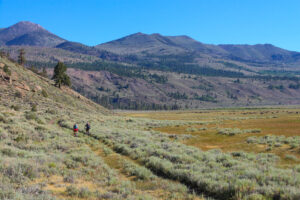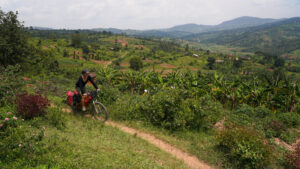Velo Spirit » A family bike tour in the Indian Himalayas
A family bike tour in the Indian Himalayas
Ariane, Sébastien and their three children share the story of their cycling tour across the Indian Himalays. An extraordinary trip undertaken by an extraordinary family!
Text and photos: Ariane Cristini and Sébastien Langlais
This article is supported by TSARAP HIMALAYAN ADVENTURES
To view the content, please switch your smartphone to landscape format.
For the TSAGA family (Titouan, Seb, Adélie, Gaspard and Ariane), the mountains have been a source of inspiration for numerous aventures. Over the past ten years, with their three children, cycling has become the focal point of their trips through the mountain ranges of the world.
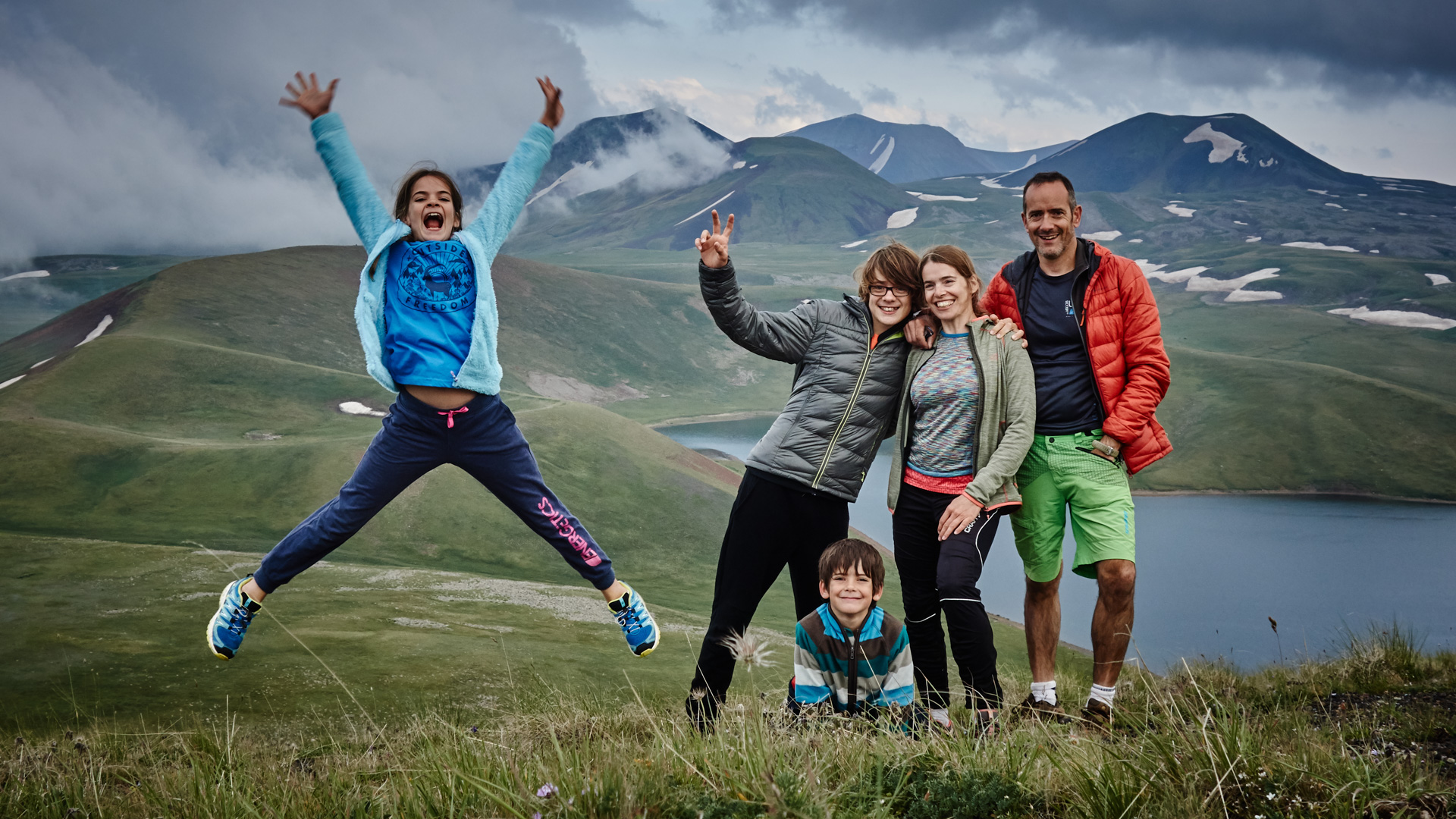
In 2016 the family set off to cross the Indian Himalayas by bike, from the border with Tibet to the border with Pakistan. Over the course of six weeks they travelled through the regions of Kinnaur and Spiti, before hiking (with the help of horses) to Zanskar. They then set off again by bike to join Indian Kashmir, before arriving in Ladakh, a voyage of a thousand kilometres. This is their story...
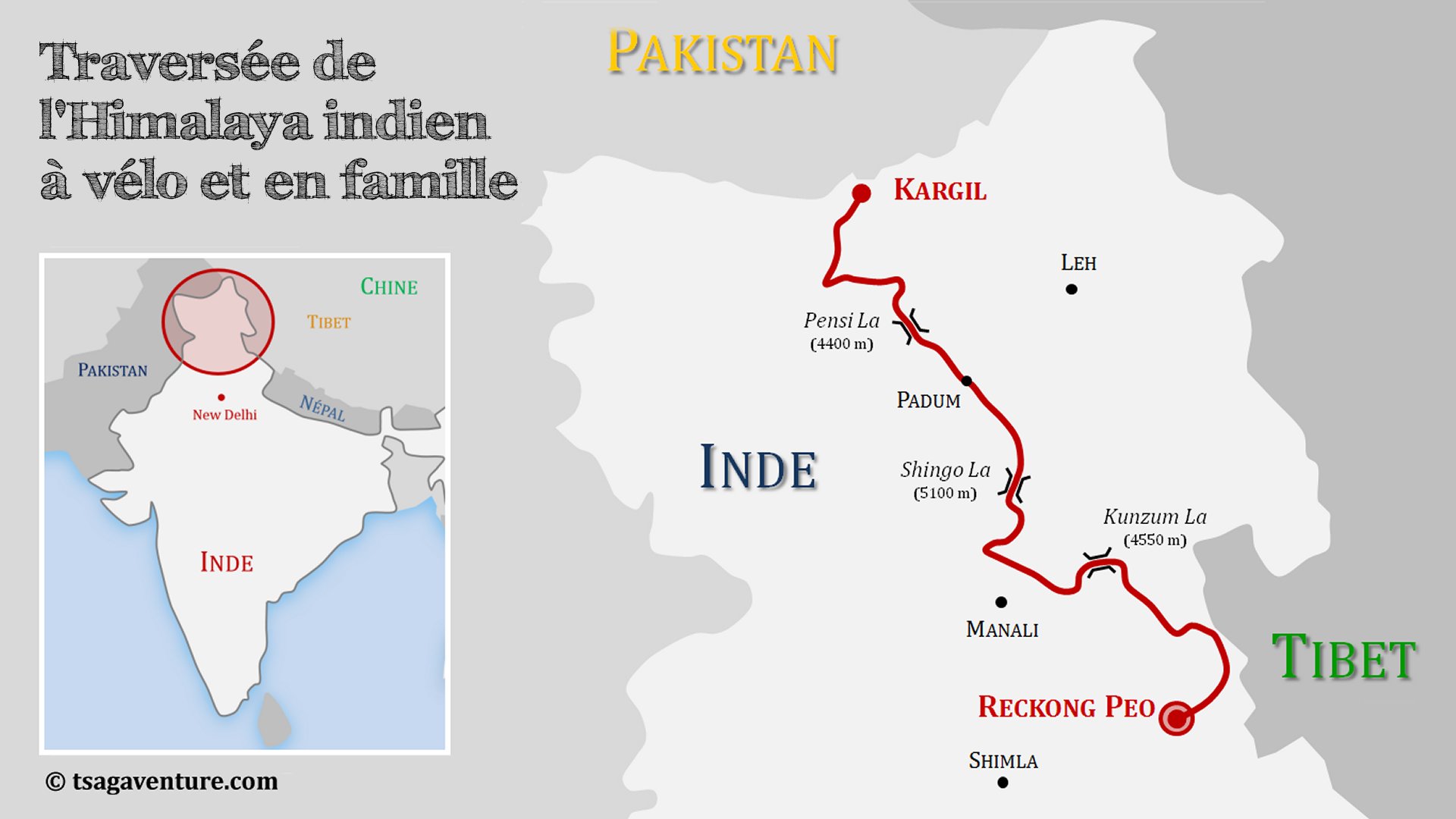
Our trip began at Reckong Peo, in the Kinnaur. This police checkpoint marks the entrance to the frontier zone bordering China, before entering the Spiti valley.
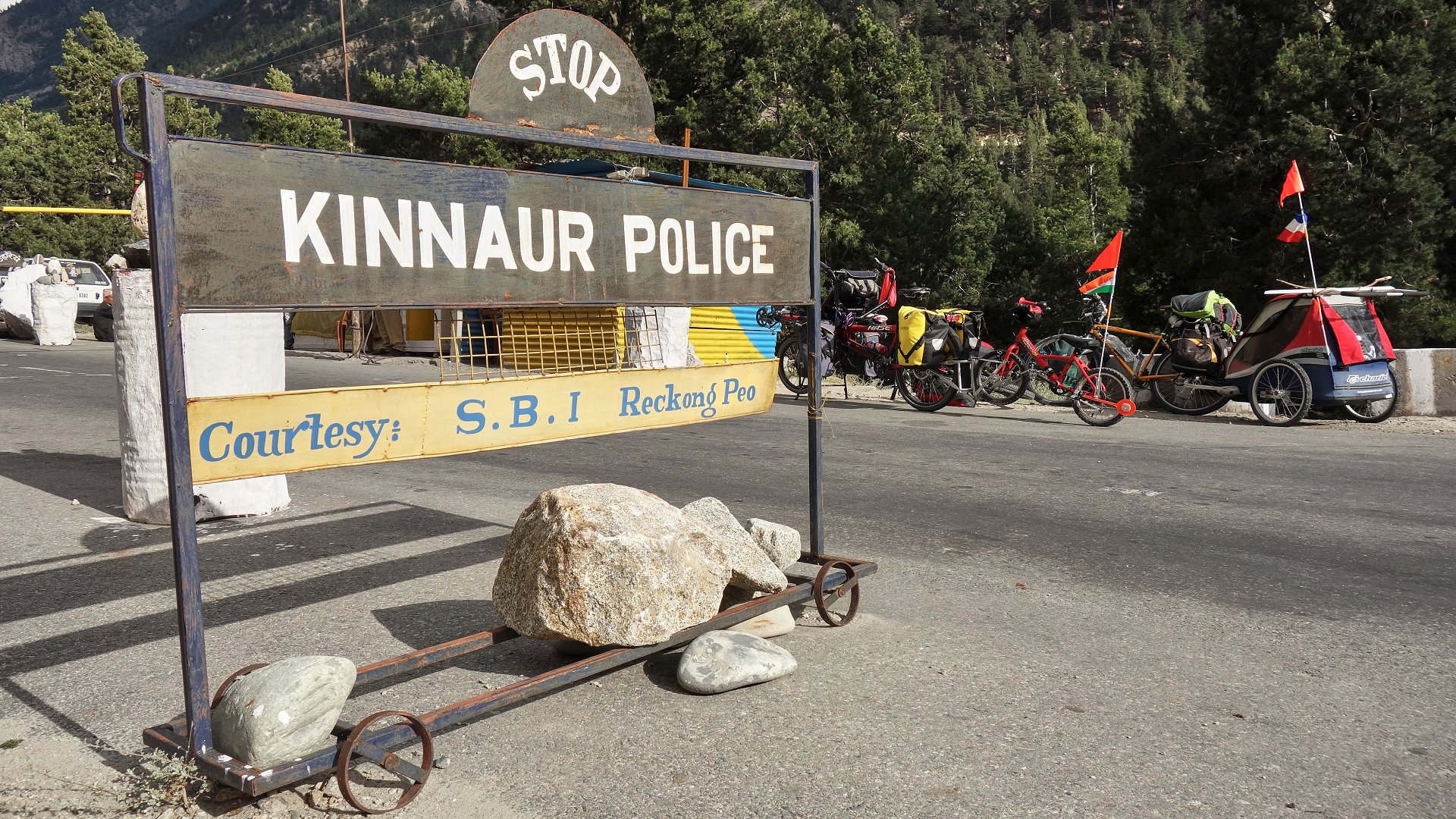
The buddhist village of Nako in the Spiti, close to Tibet. This lake at 3600m above sea level is a surprising discovery in such an arid landscape.
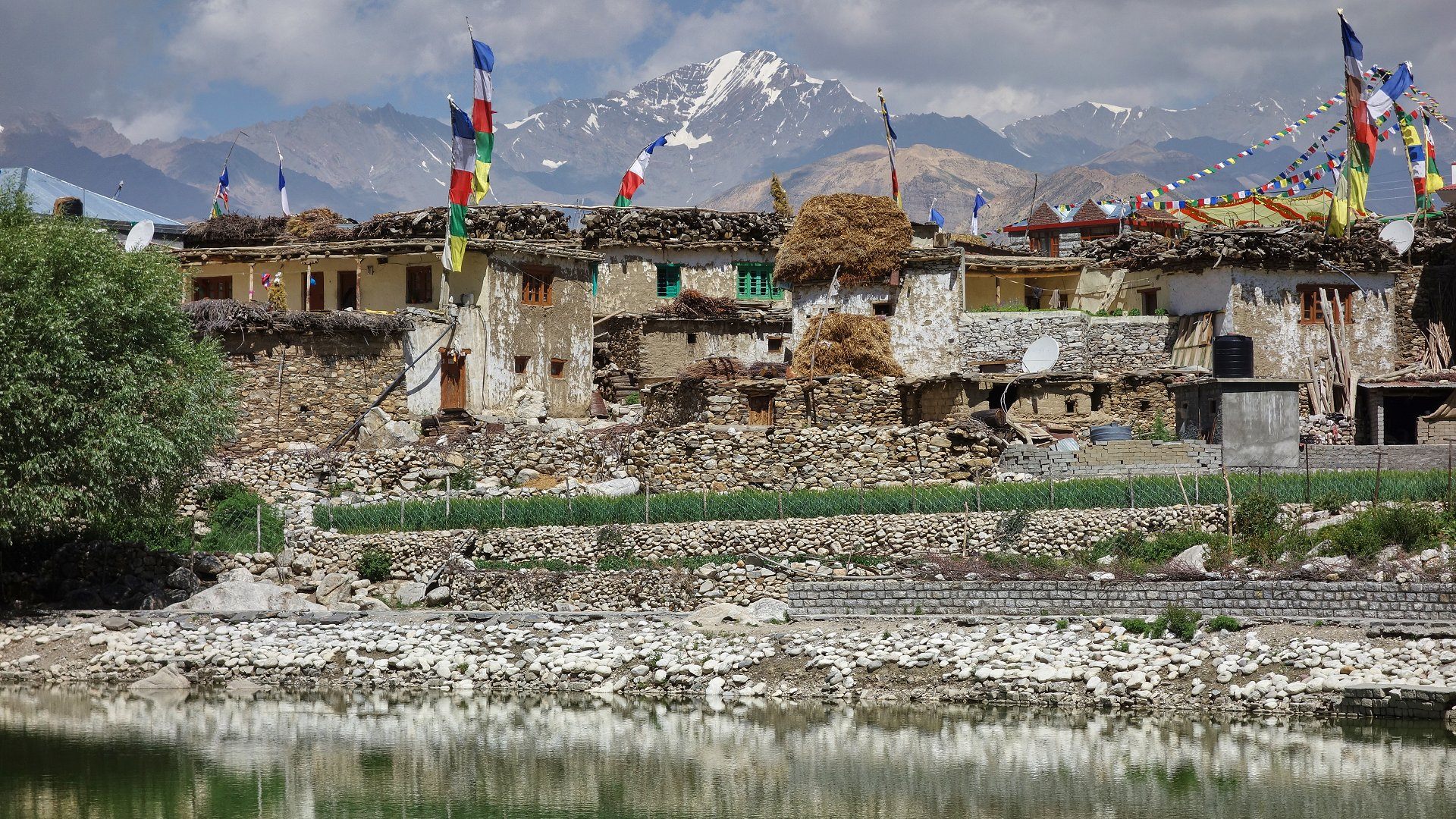
Shortly before arriving in Tabo, alongside the Spiti river. Founded in 996, the Tabo is one of the oldest Buddhist monasteries in the world.
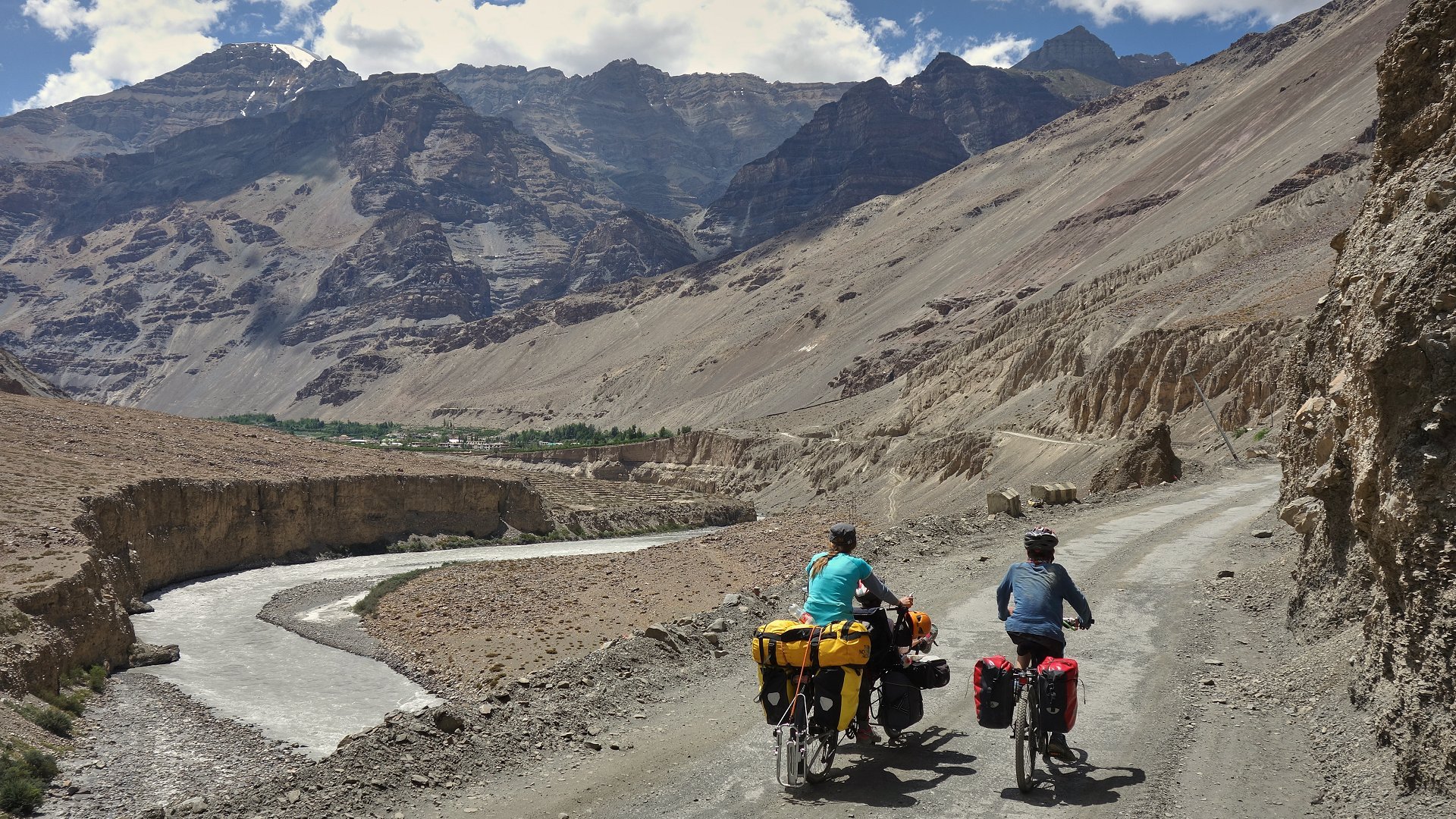
Young people of Kinnaur and Spiti.
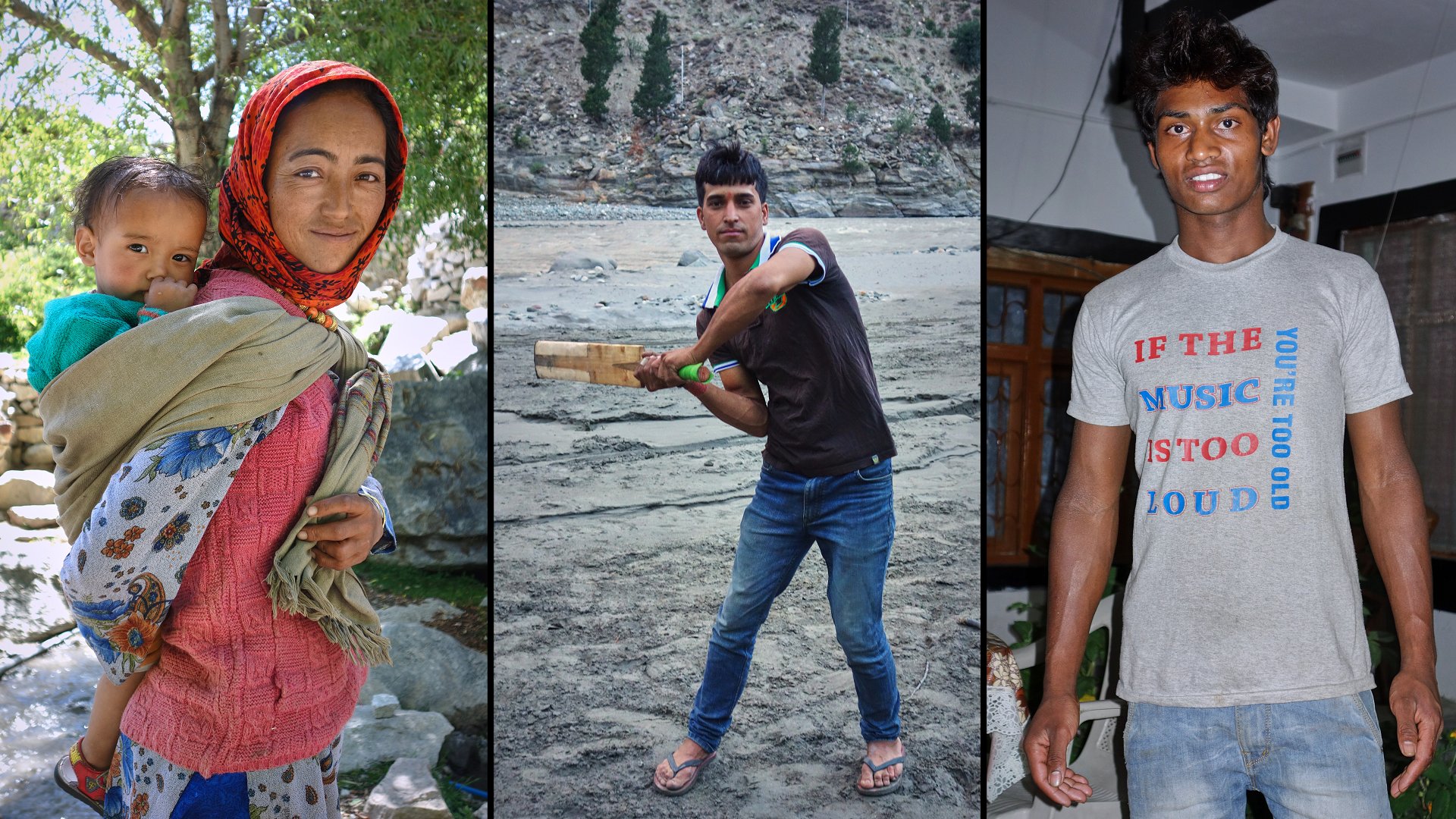
The Dhankar monastery is perched high above the river Spiti, at 3900m. As is often the case in mystical places such as this, the setting is ideal for contemplation and meditation.
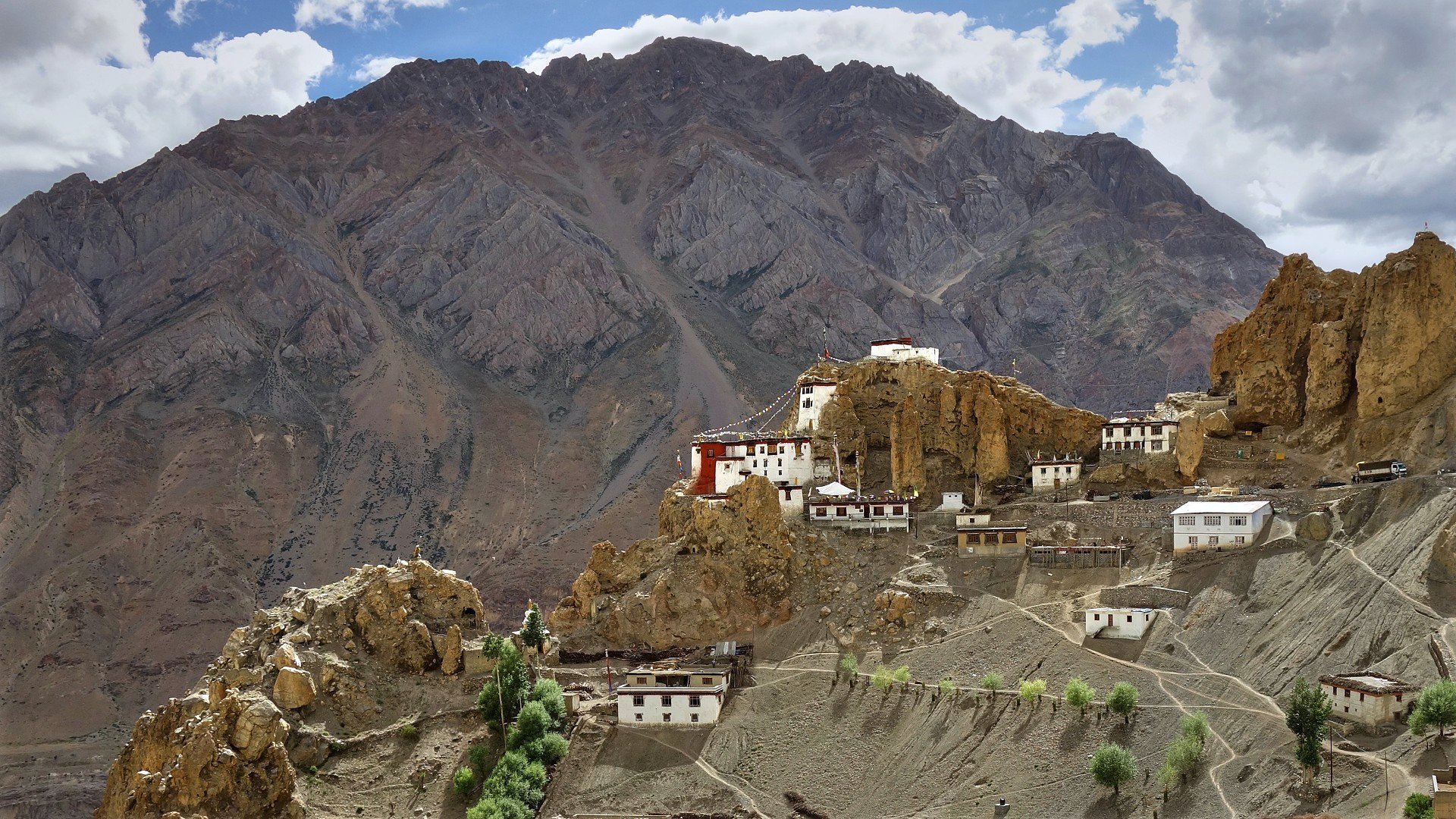
In arid areas such as these, the Himalayan mountain range is subjected to extensive erosion, creating impressive "fairy chimneys" or "hoodoos".
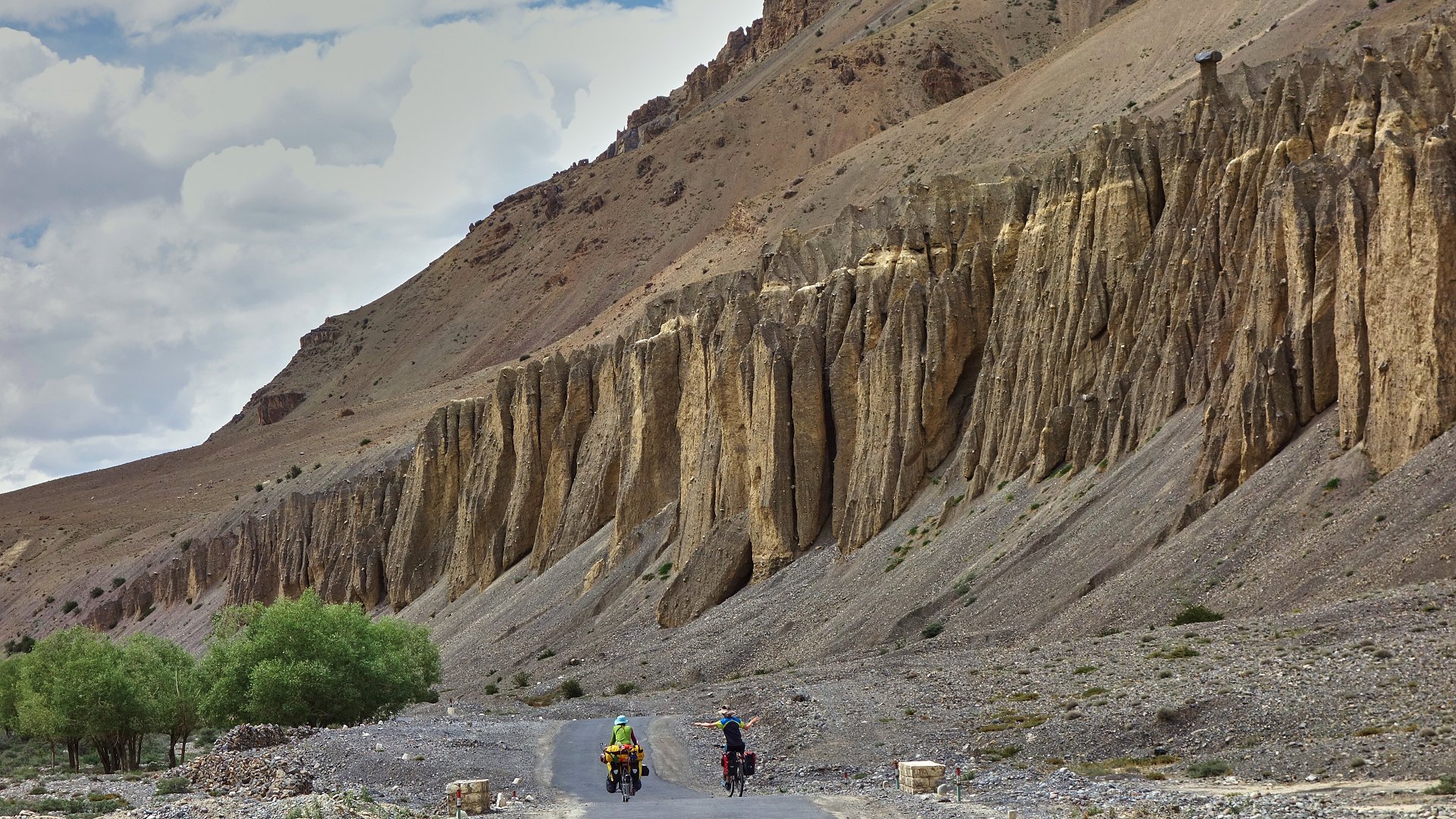
The Key monastery is one of the most important Buddhist monasteries in the Spiti valley. Built on a promontory, it overlooks a patchwork of barley fields that, once toasted and milled, becomes a flour - Tsampa - the basis of the Himalayan populations diet.
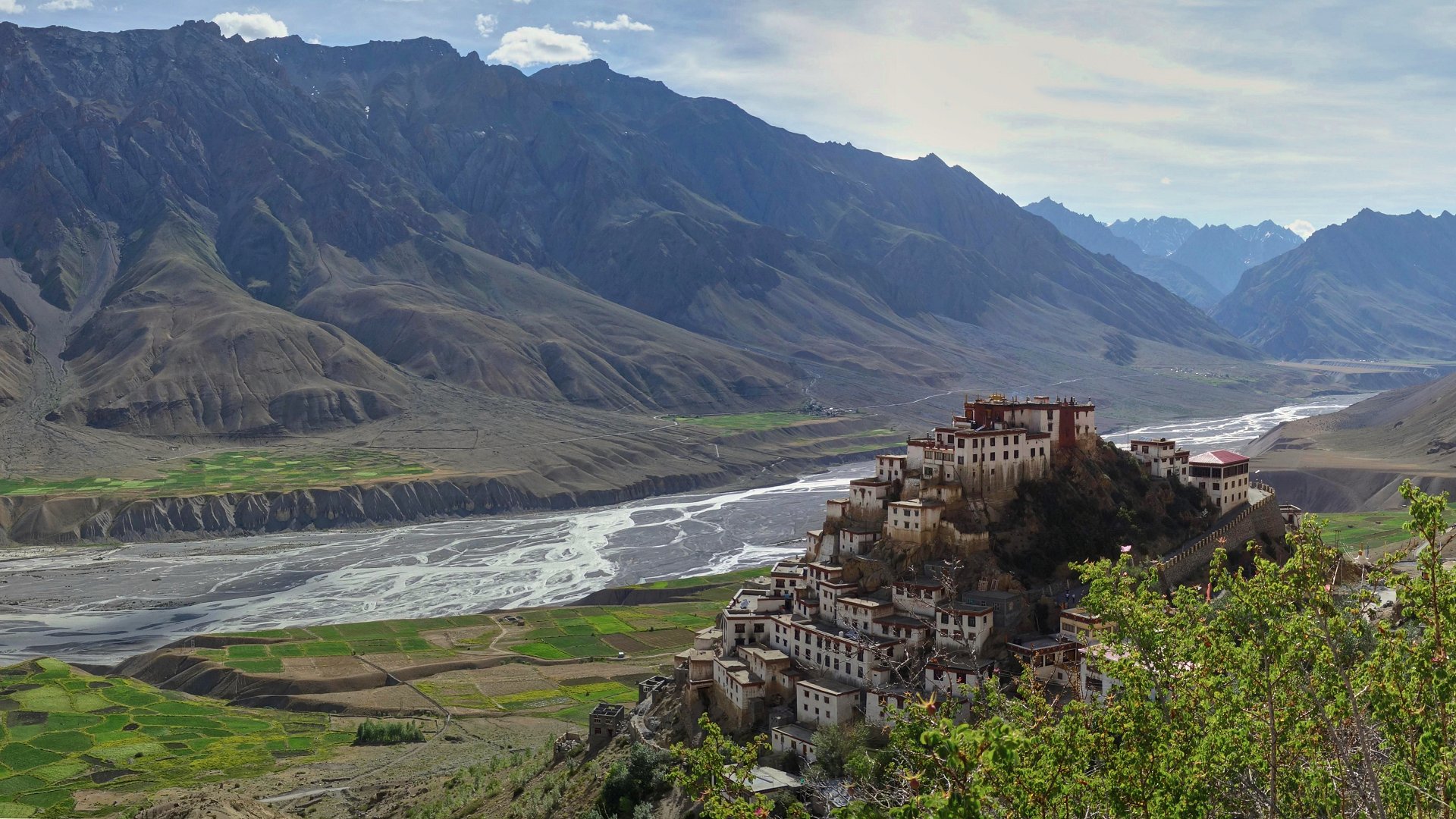
The Spiti villages are mostly situated between 3000 and 4000m. At these altitudes, winters are harsh and trees are short and stumpy. The main fuel source is dried cow and yak dung, as collected by this young girl in her basket.
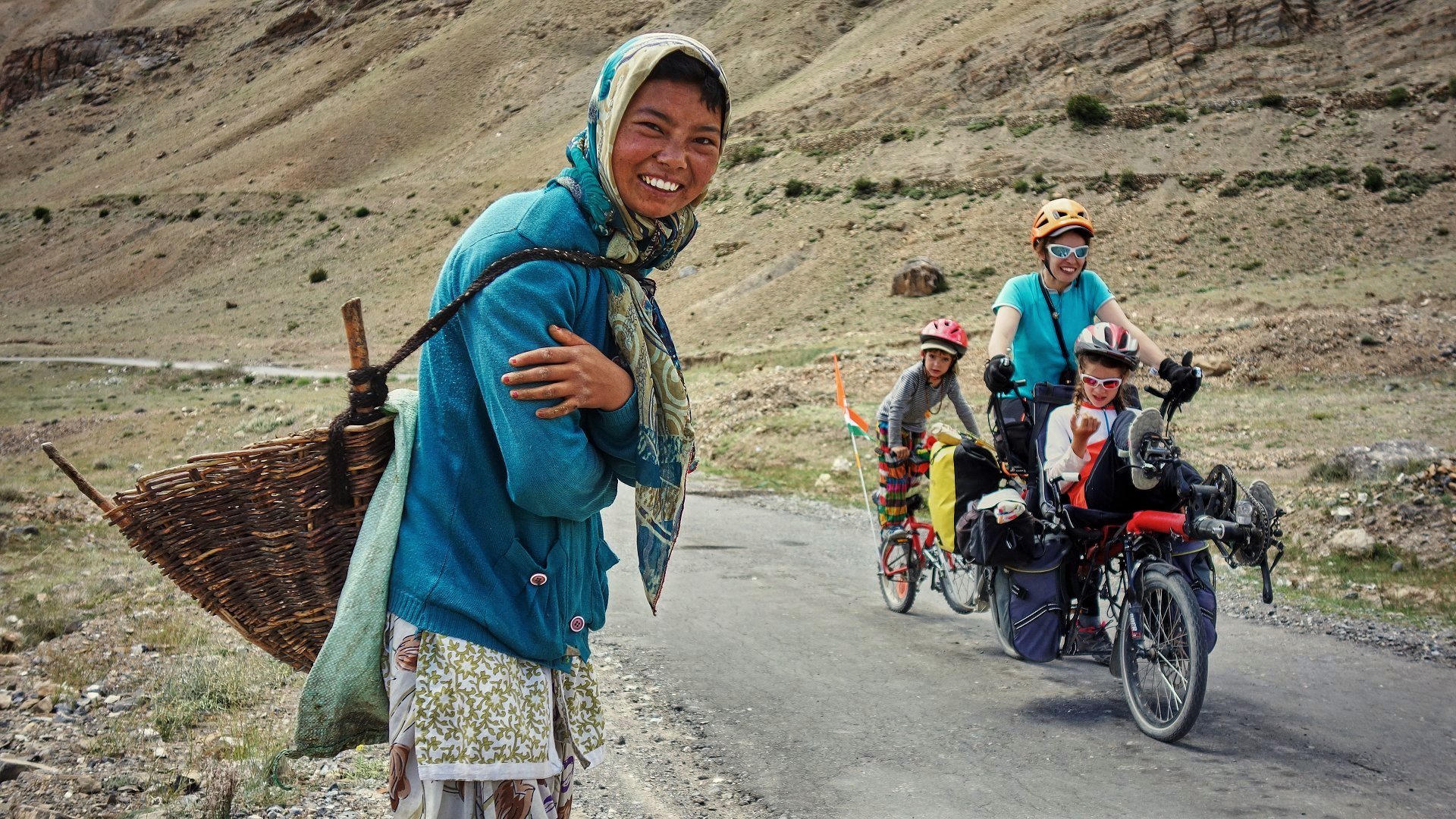
The traditional flat-roofed houses of the Spiti are characteristic of regions that receive little rainfall. Agricultural practices are nonetheless possible thanks to an irrigation system that channels river water from high-altitude glaciers. The small parcels of land are optimised in order to harvest peas and beans during the short summer months.
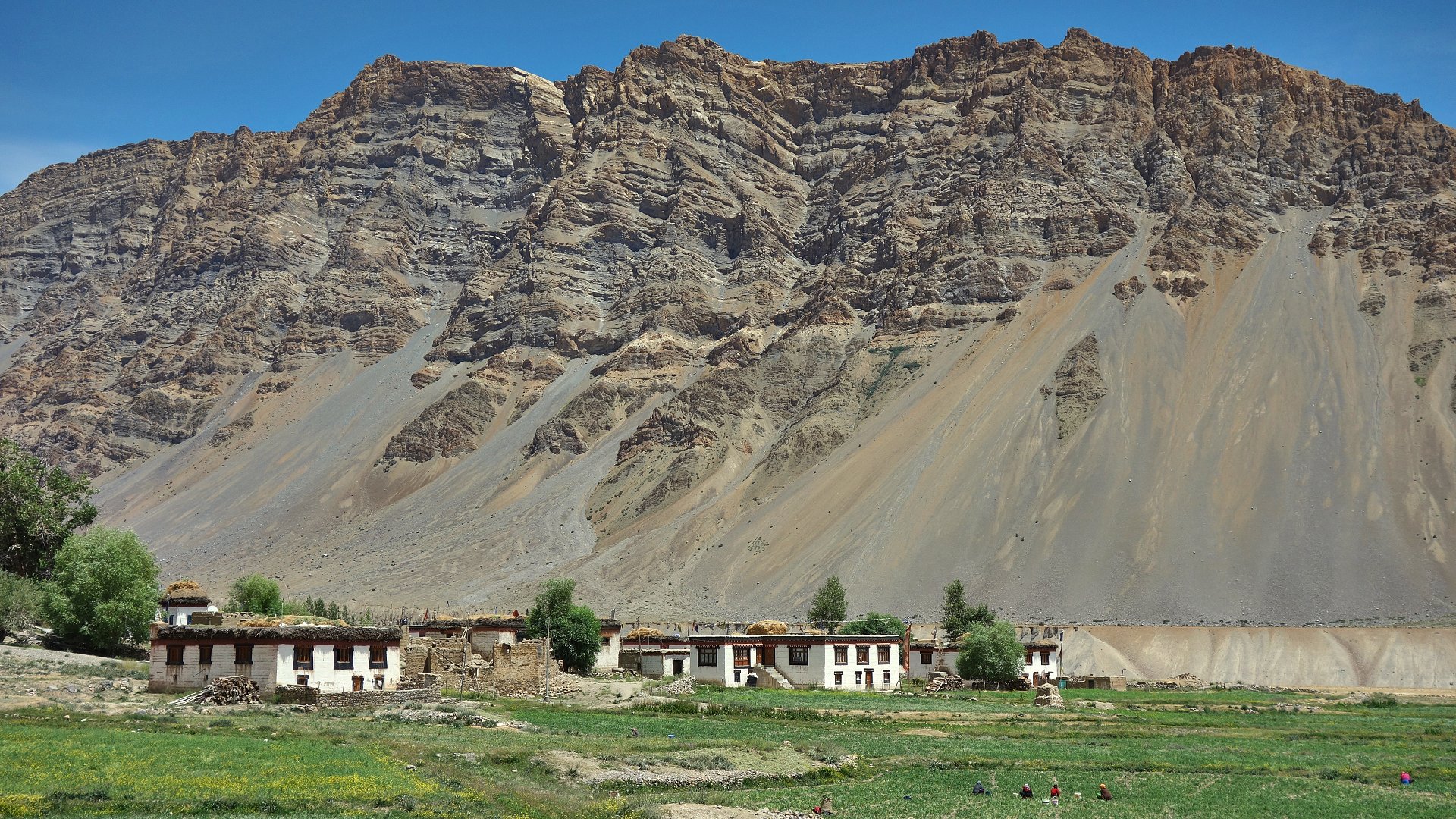
A great camping spot is the icing on the cake for every cycle tourer!
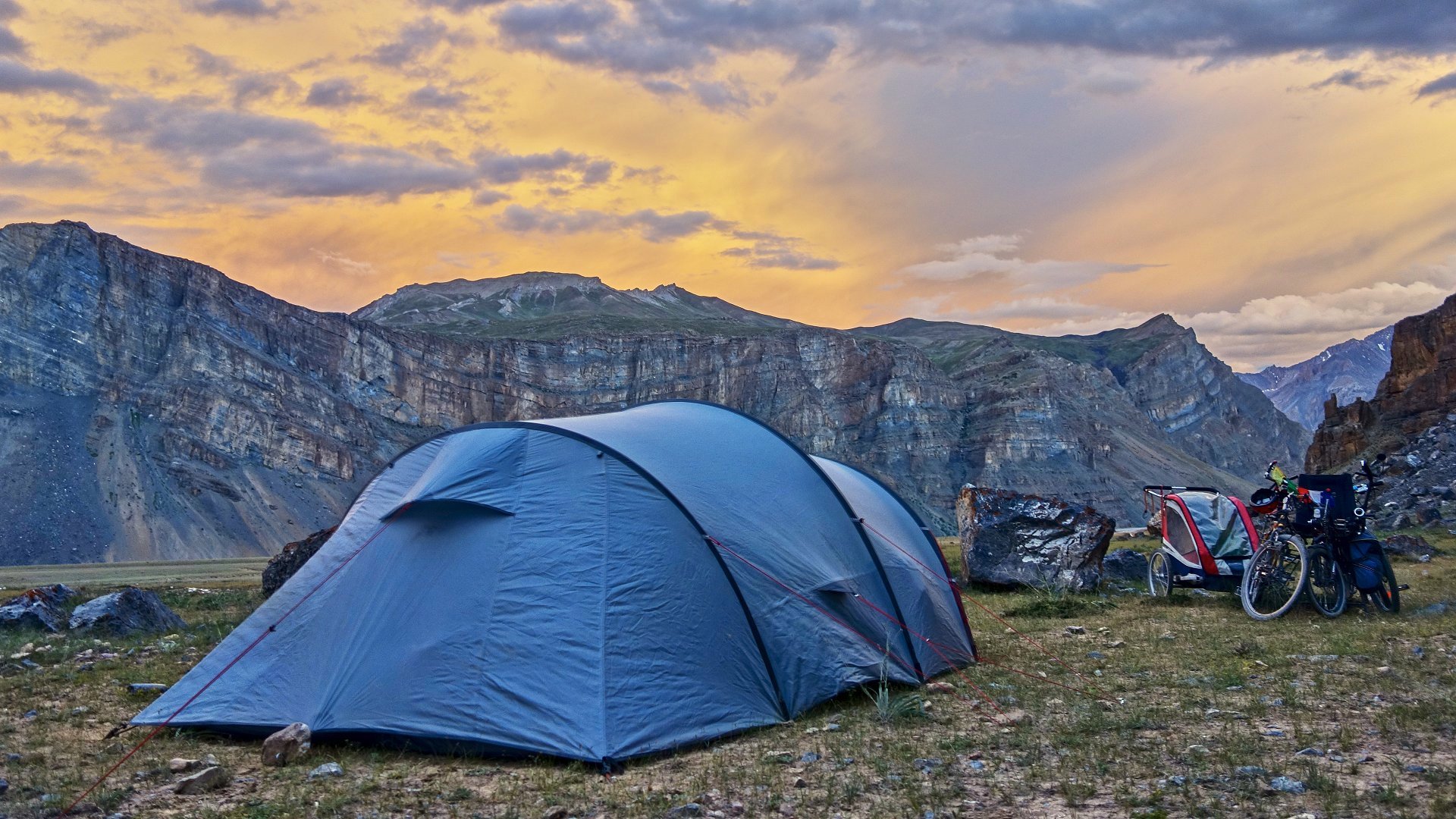
From time to time, a thin line of tarmac appears, as if from nowhere. The labourers work in conditions from another age. The majority of the workers who undertake the arduous task of road repairs are Nepalese or from the Bihar.
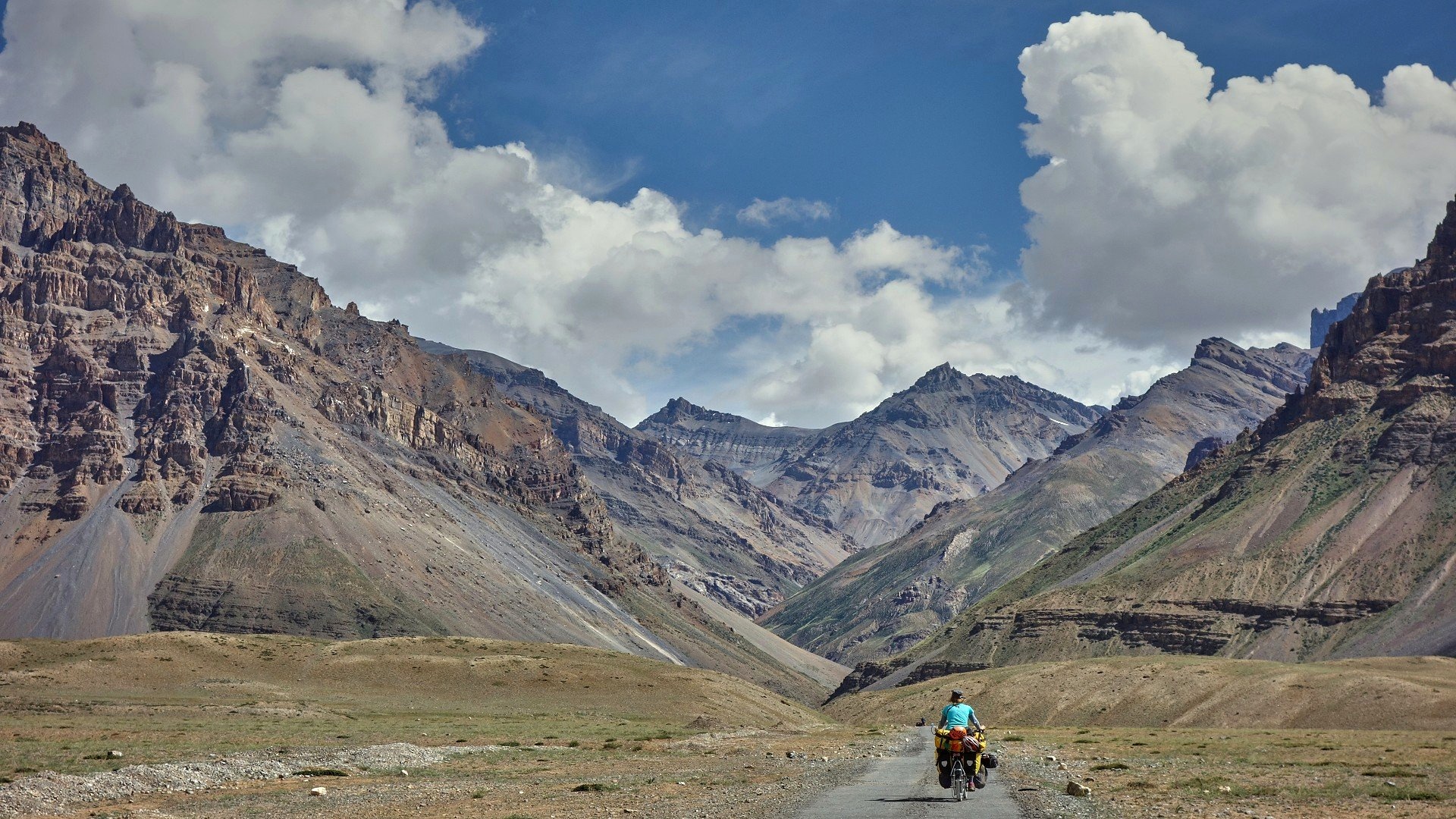
After Losar, we attack the final climb to the Kun Zum La (4550m above sea level), gateway to the Lahaul valley.
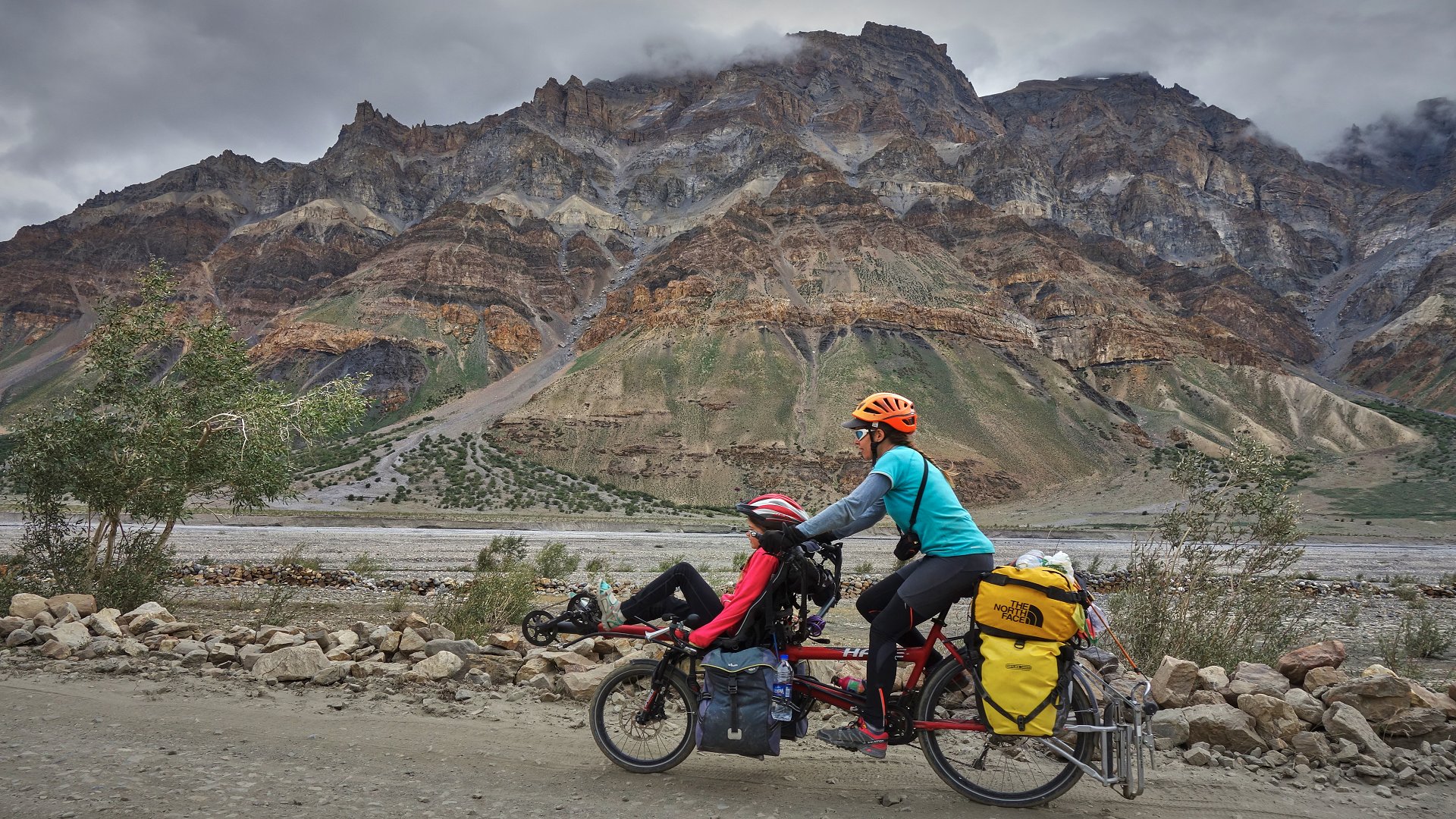
The women of Spiti wear traditional jewellery made from turquoise, a characteristic Himalayan gemstone.
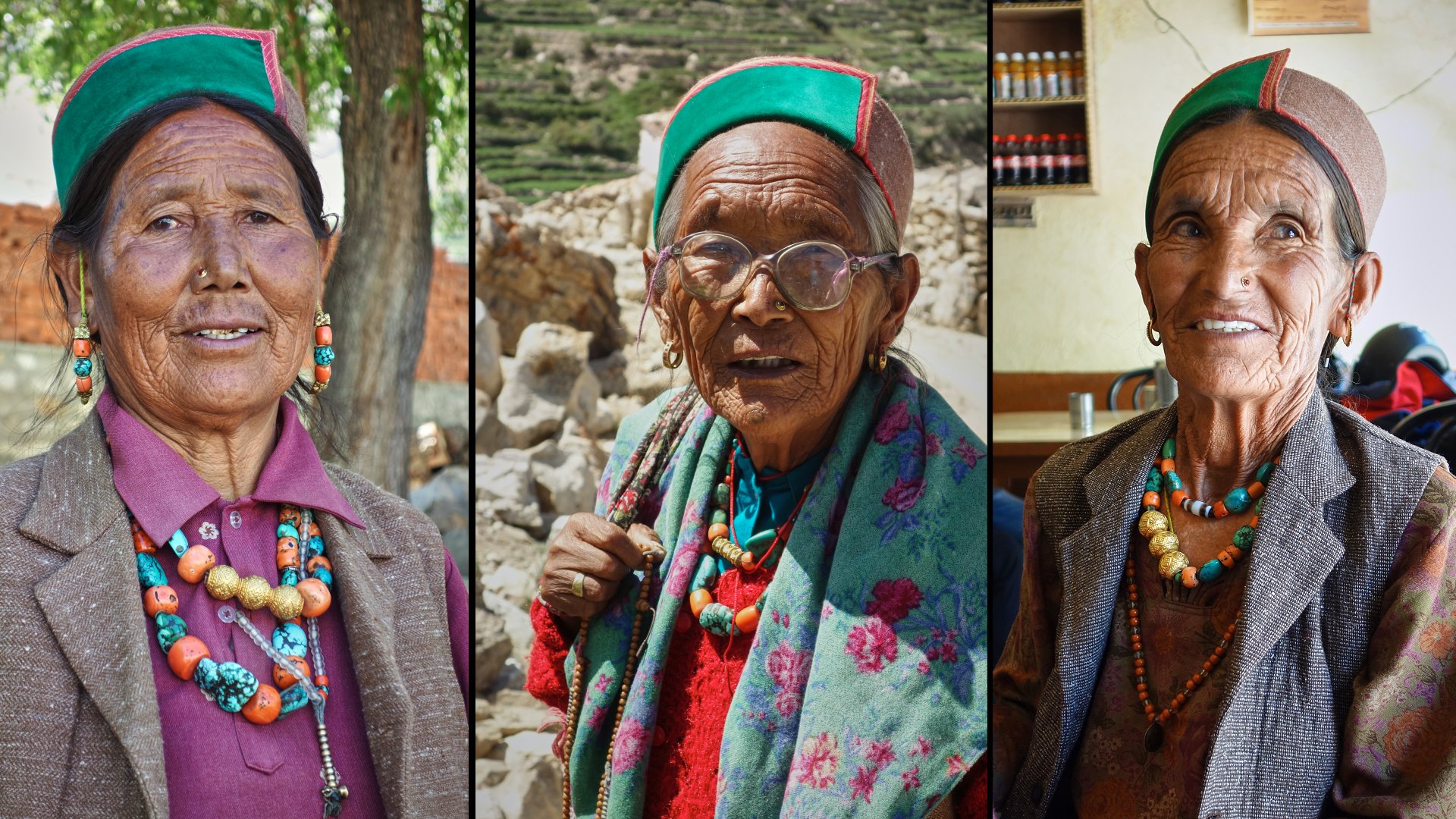
Situated at 4200m, Chandra Tal is a sacred lake for Hindus.
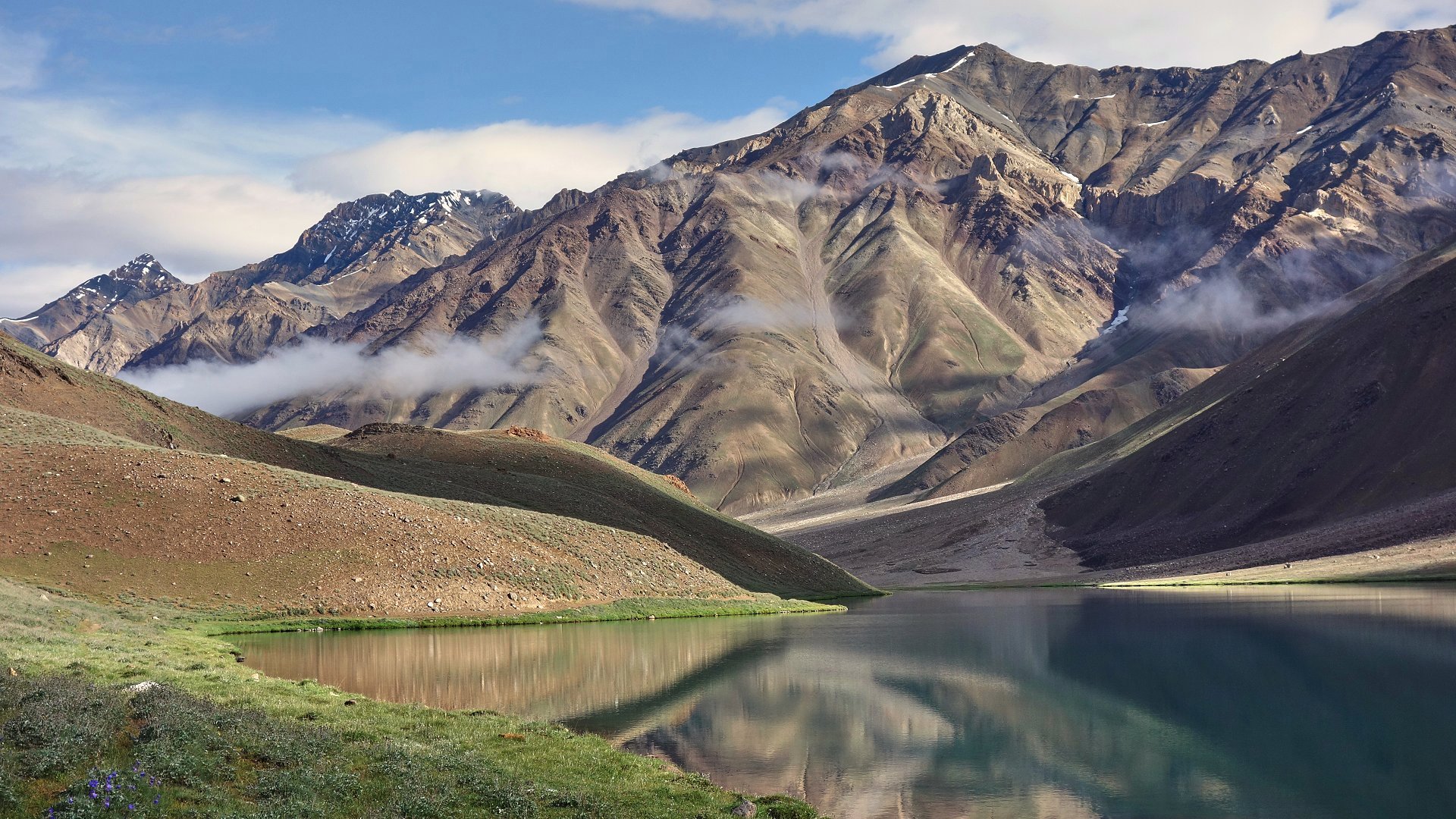
The upright-recumbent tandem is perfectly suited to long-haul bike tours with children.
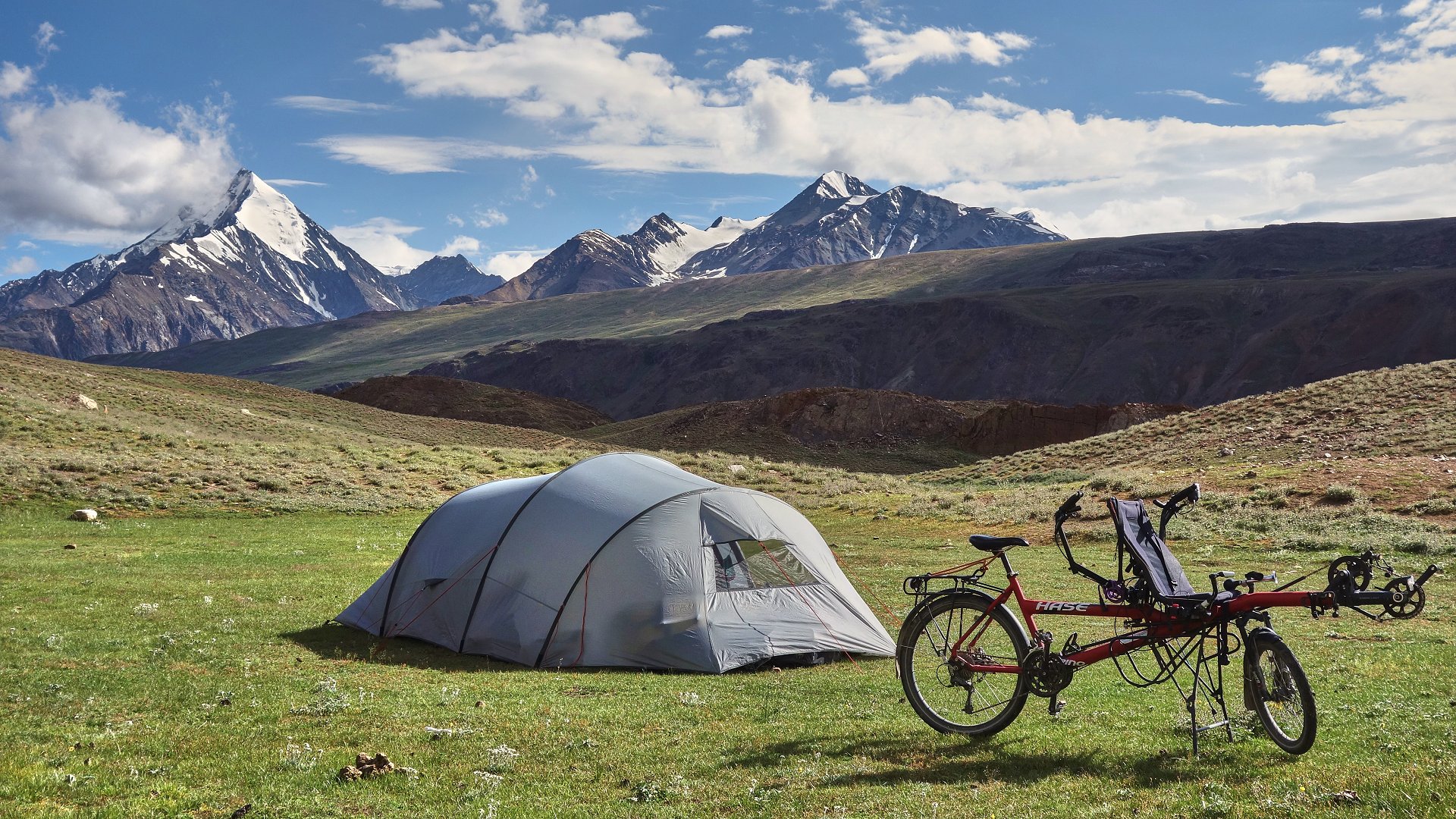
The small upper Chandra Tal lake, where we decide to set up our bivouac.
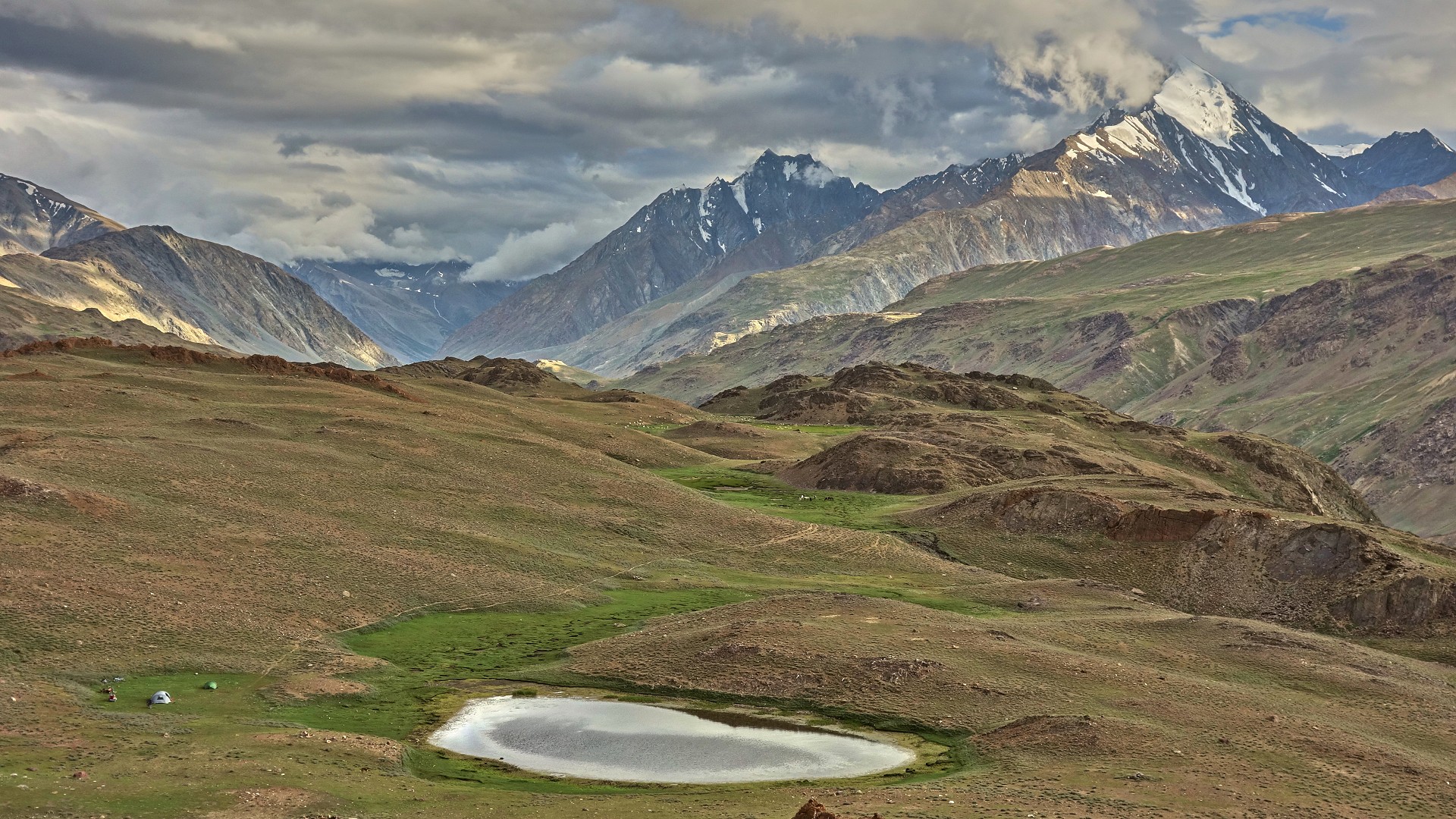
Riding under the imposing 6000m summits.
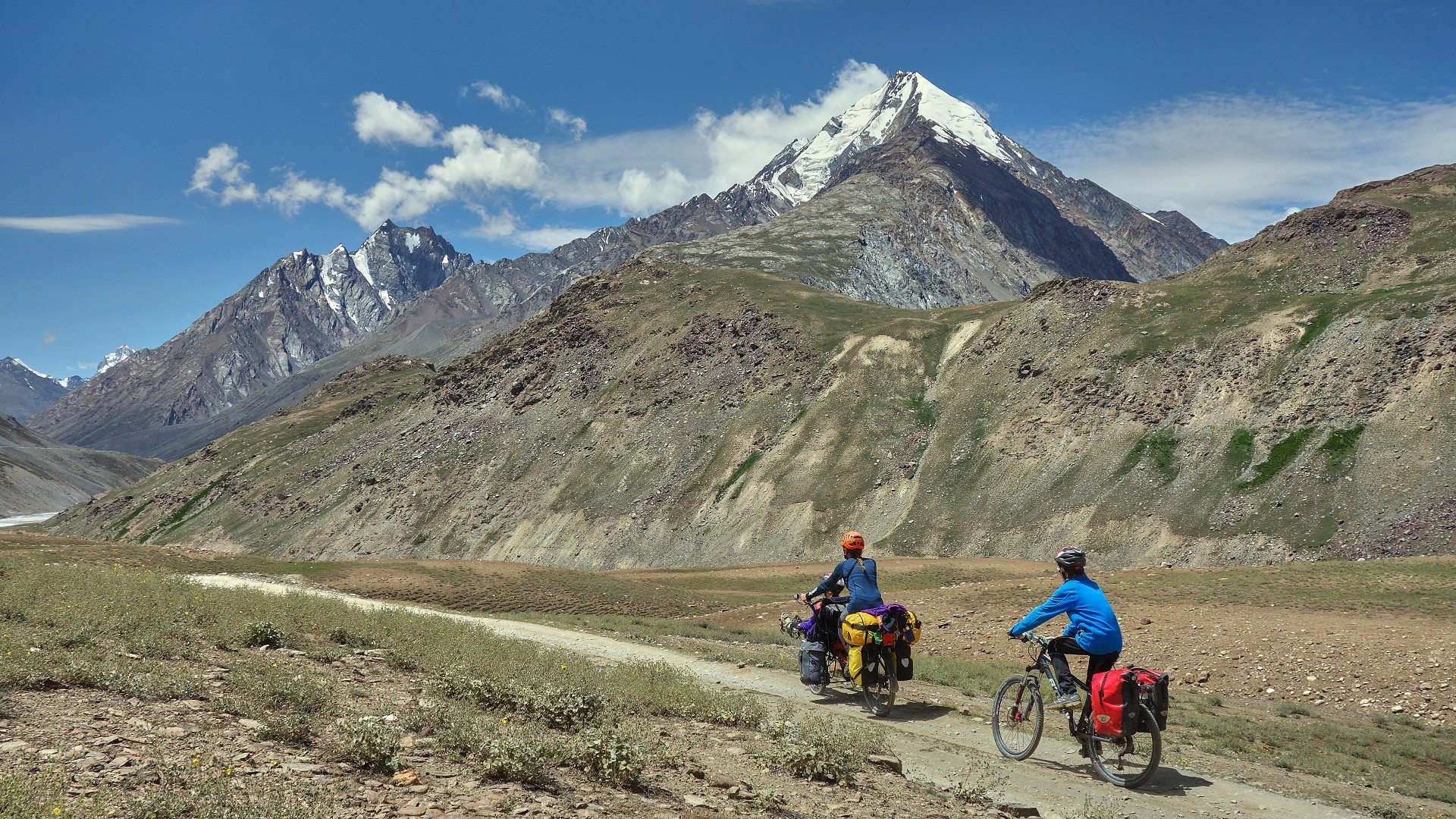
Late in the day, the streams and rivers (swollen by high altitude snowmelt) make the fords, or "nallah", difficult to cross.
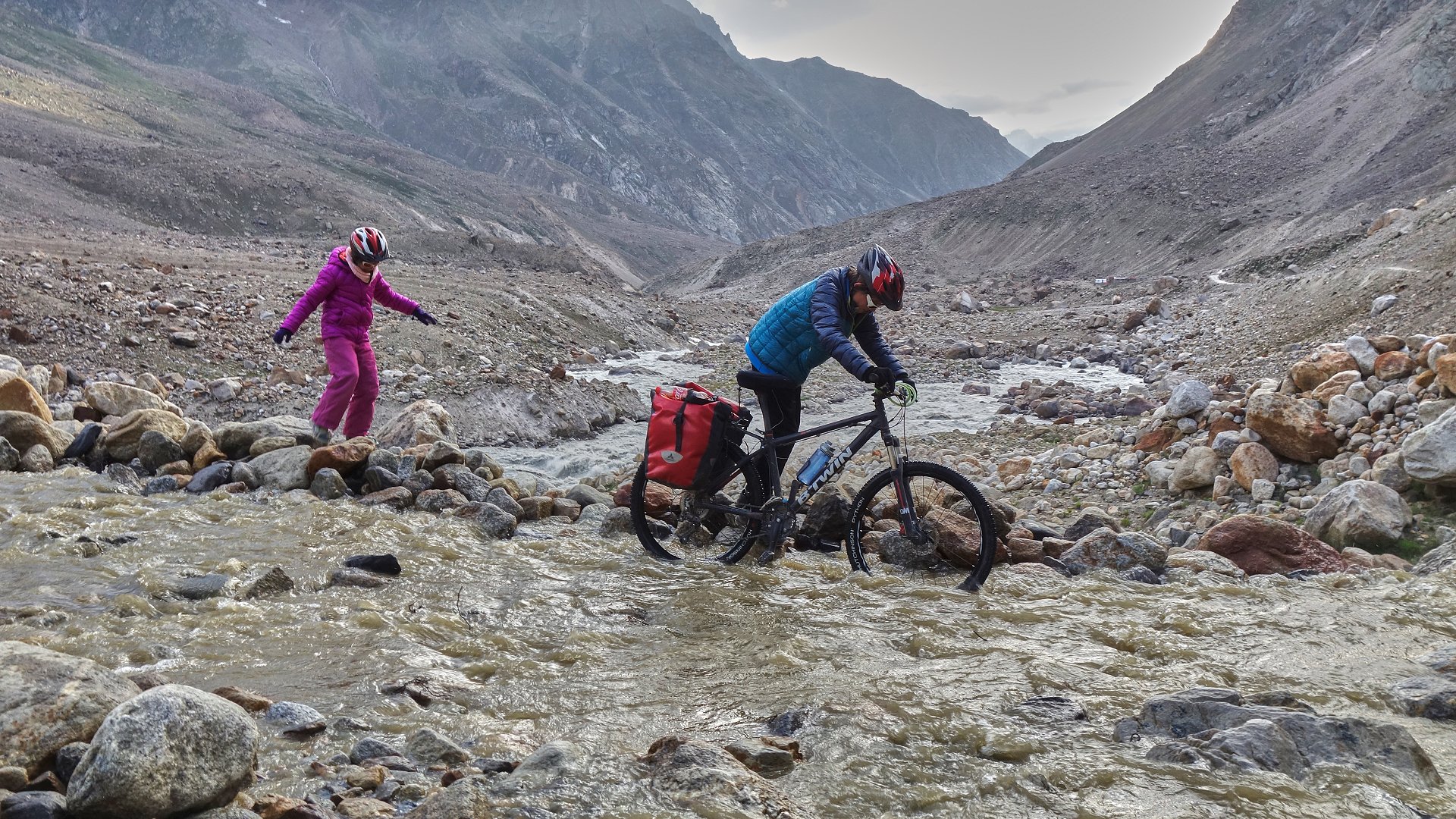
Descent on the Chatruu (Chenab) valley track, considered to be one of the most "rugged" and difficult in the Himalayas by the truck drivers who use it.
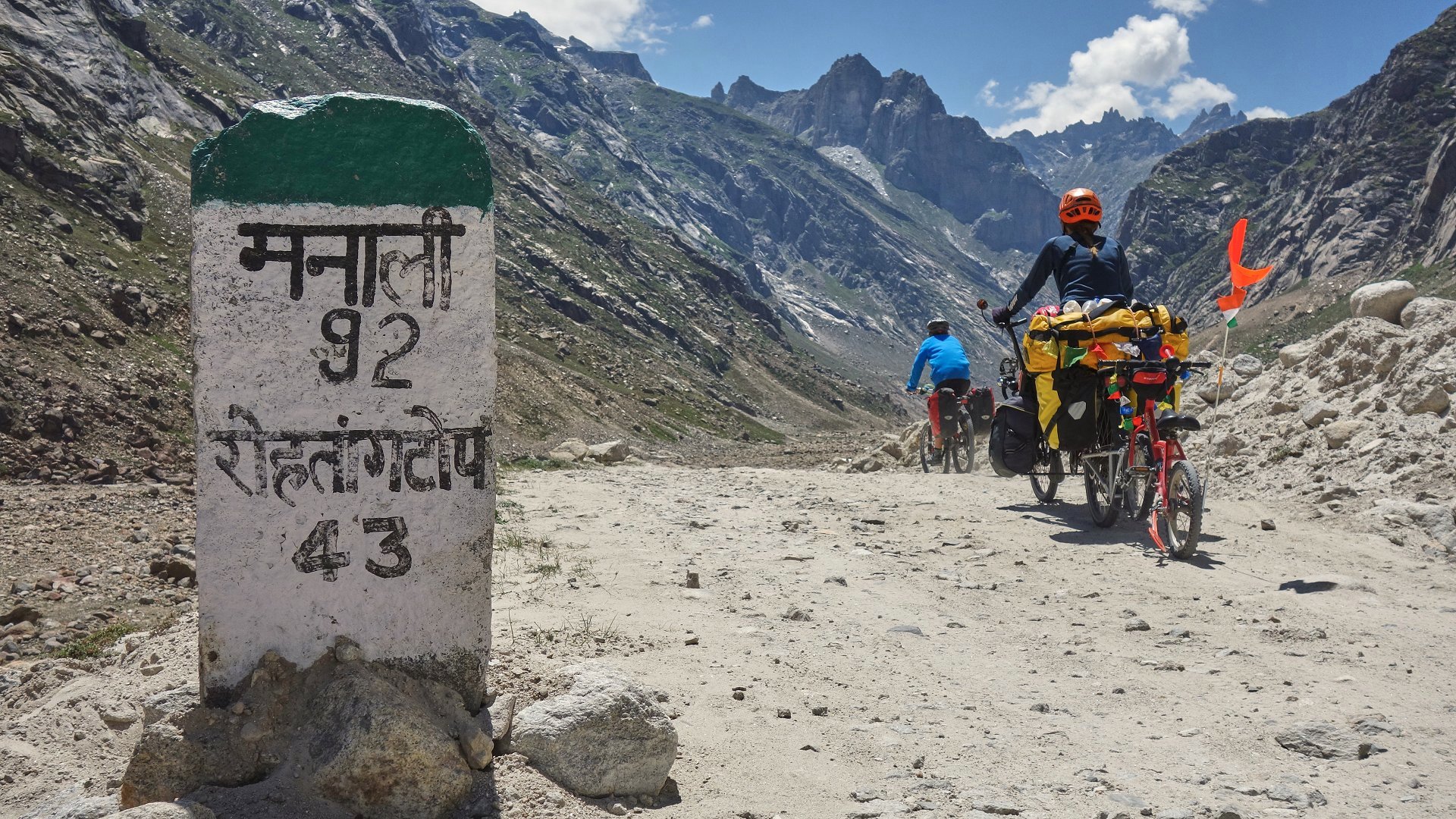
To reach the Shingo La (5100m) and cross the Zanskar, we undertake an 8 day trek, putting our bikes (and trailer!) on horses.
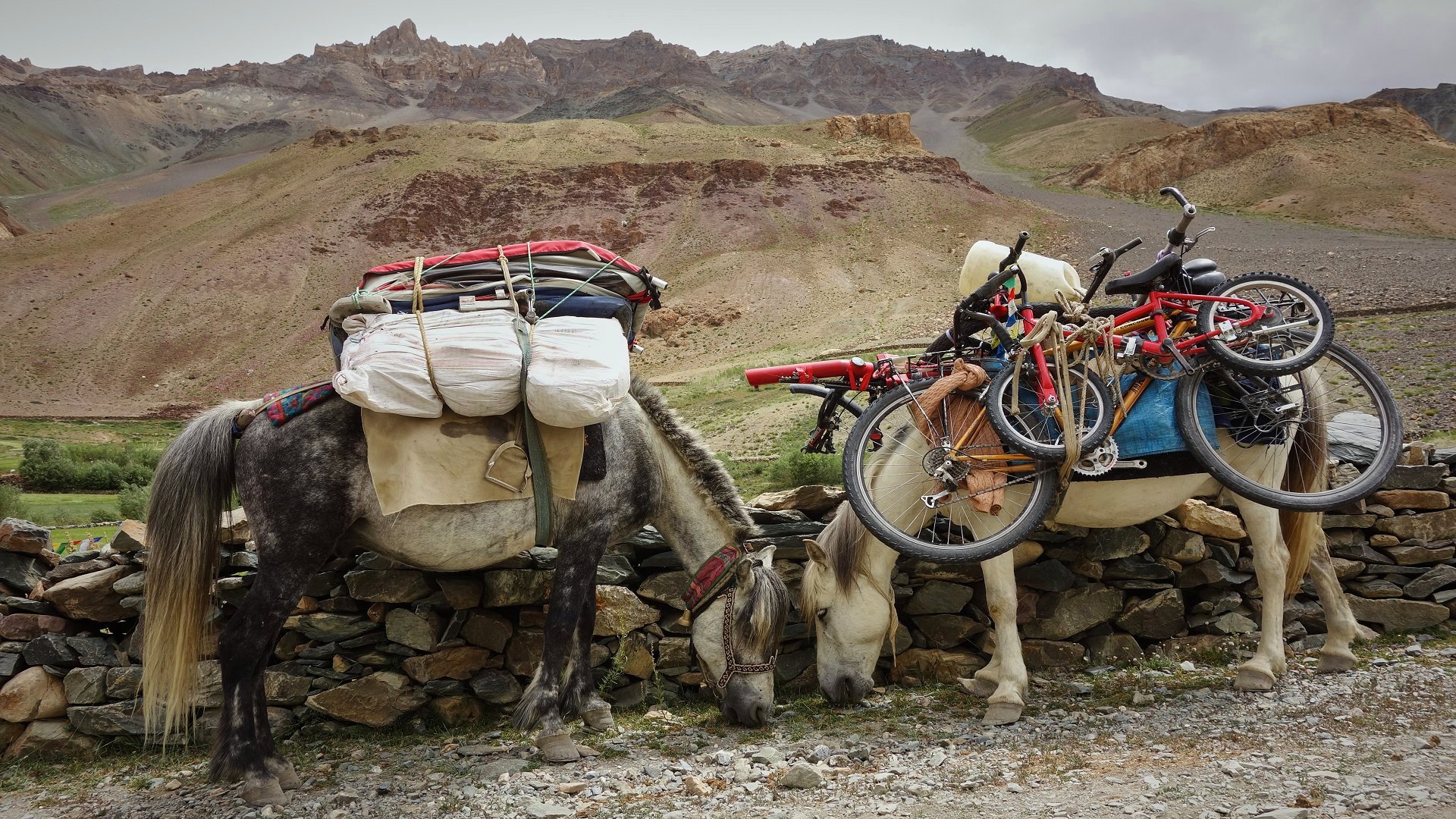
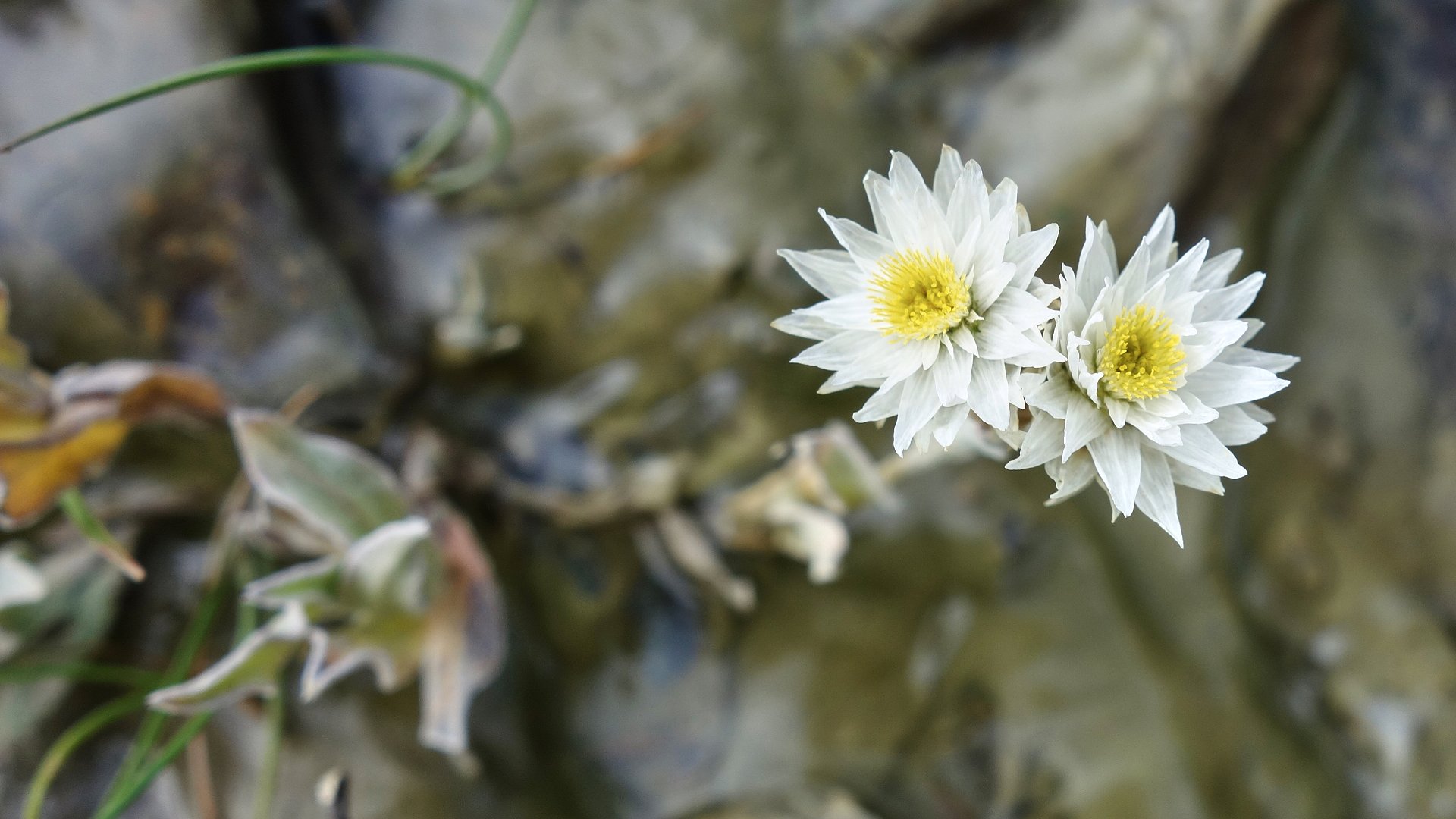
We keep one bike with us, so that the kids can enjoy a few descents. Late in the day, it's "high tide" thanks to the high altitude snowmelt, forcing us to get our feet wet in order to cross this half submerged bridge.
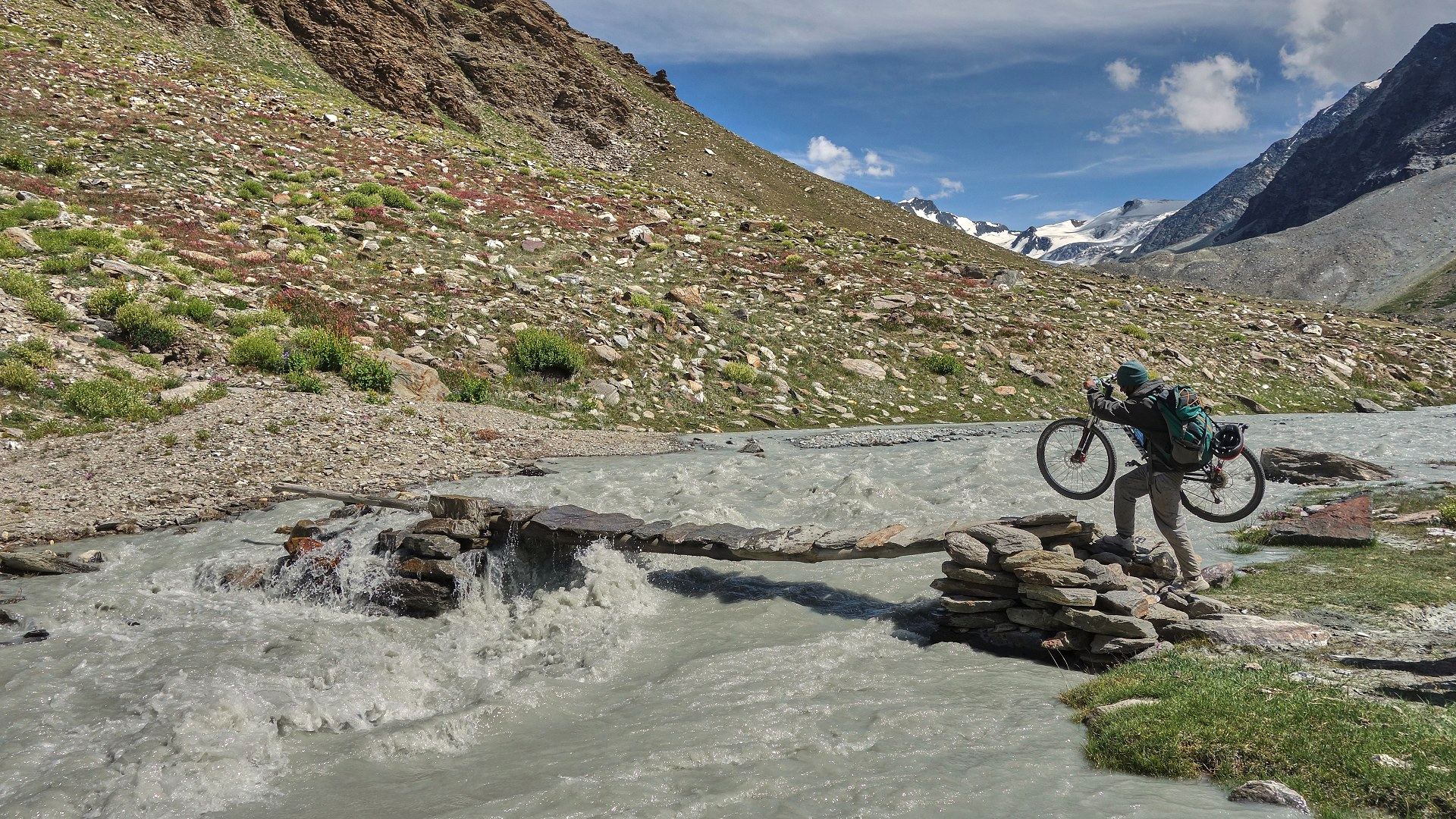
The sacred Gumburanjon pyramid (Zanskar).
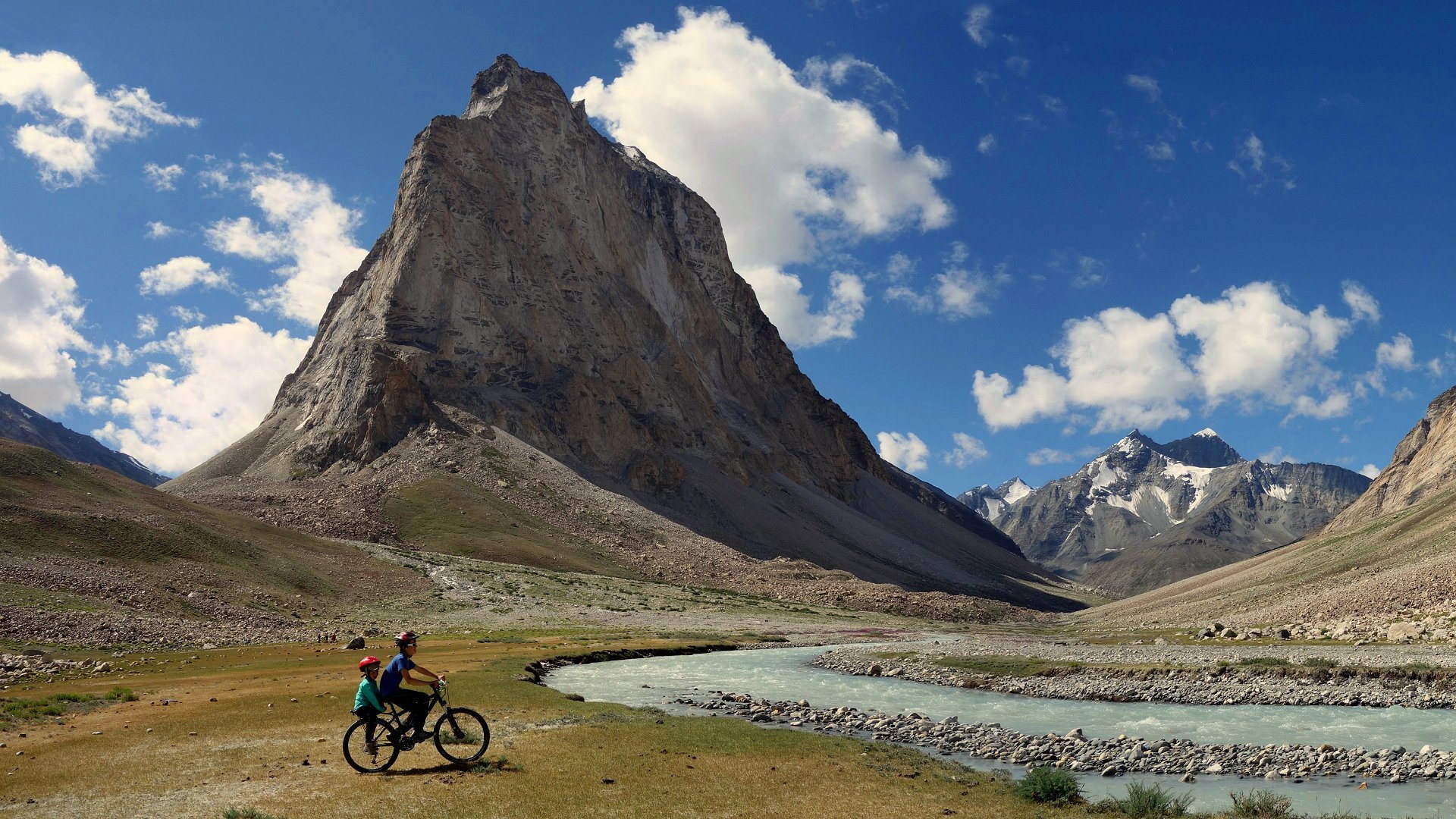
A little delicate beauty amidst the mighty mineral landscape. Blue Poppy, or Himalayan Poppy.
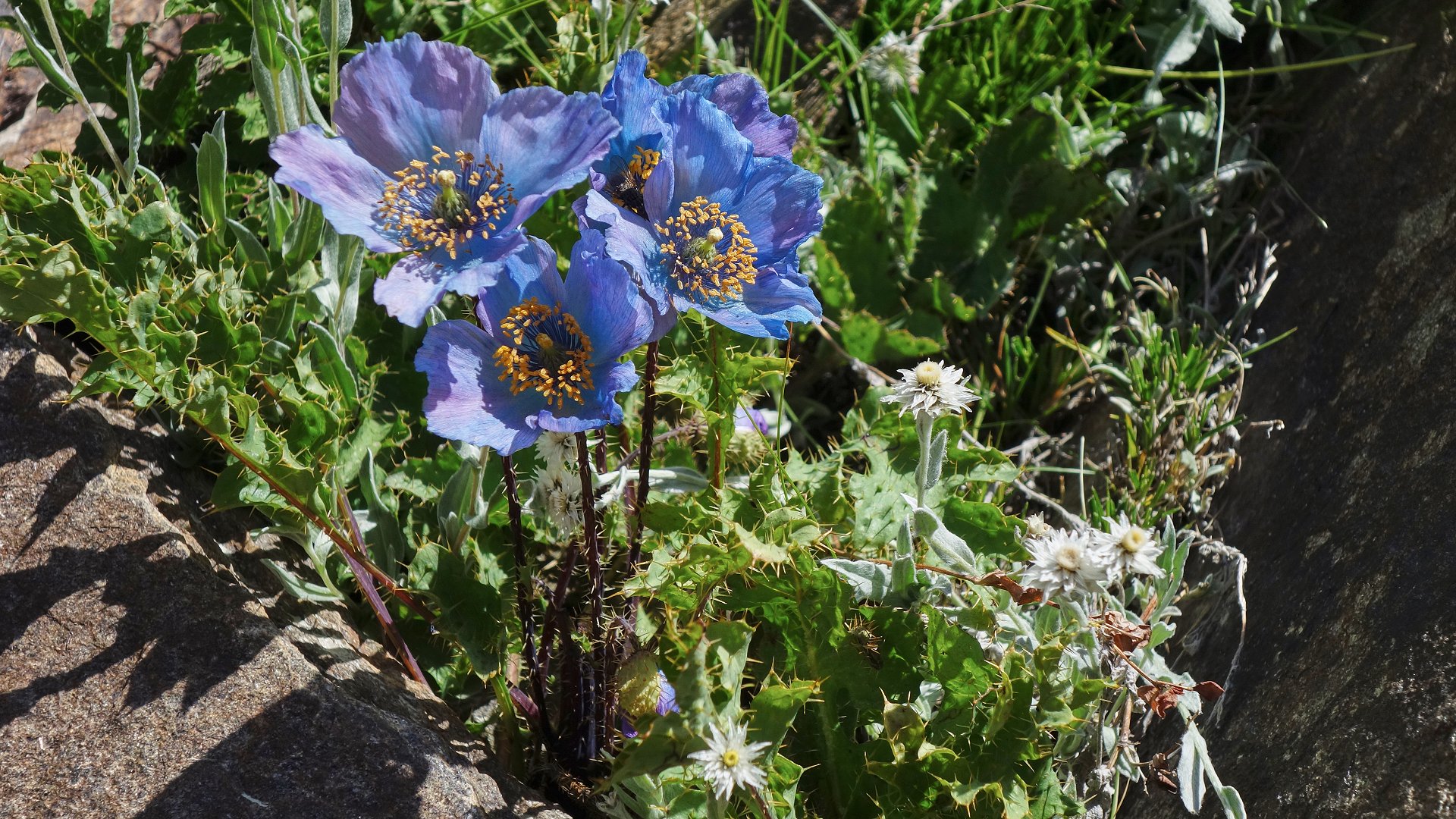
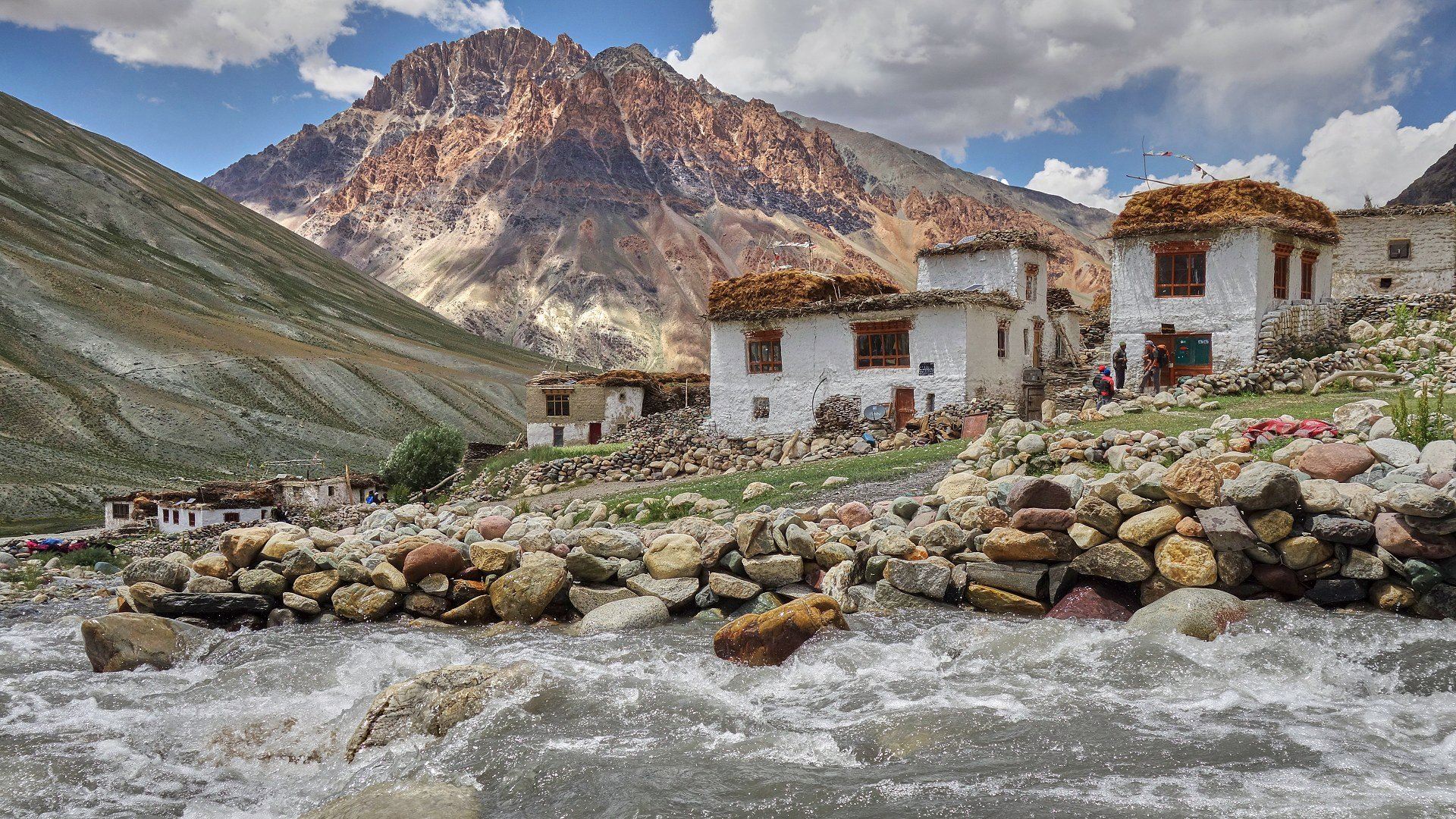
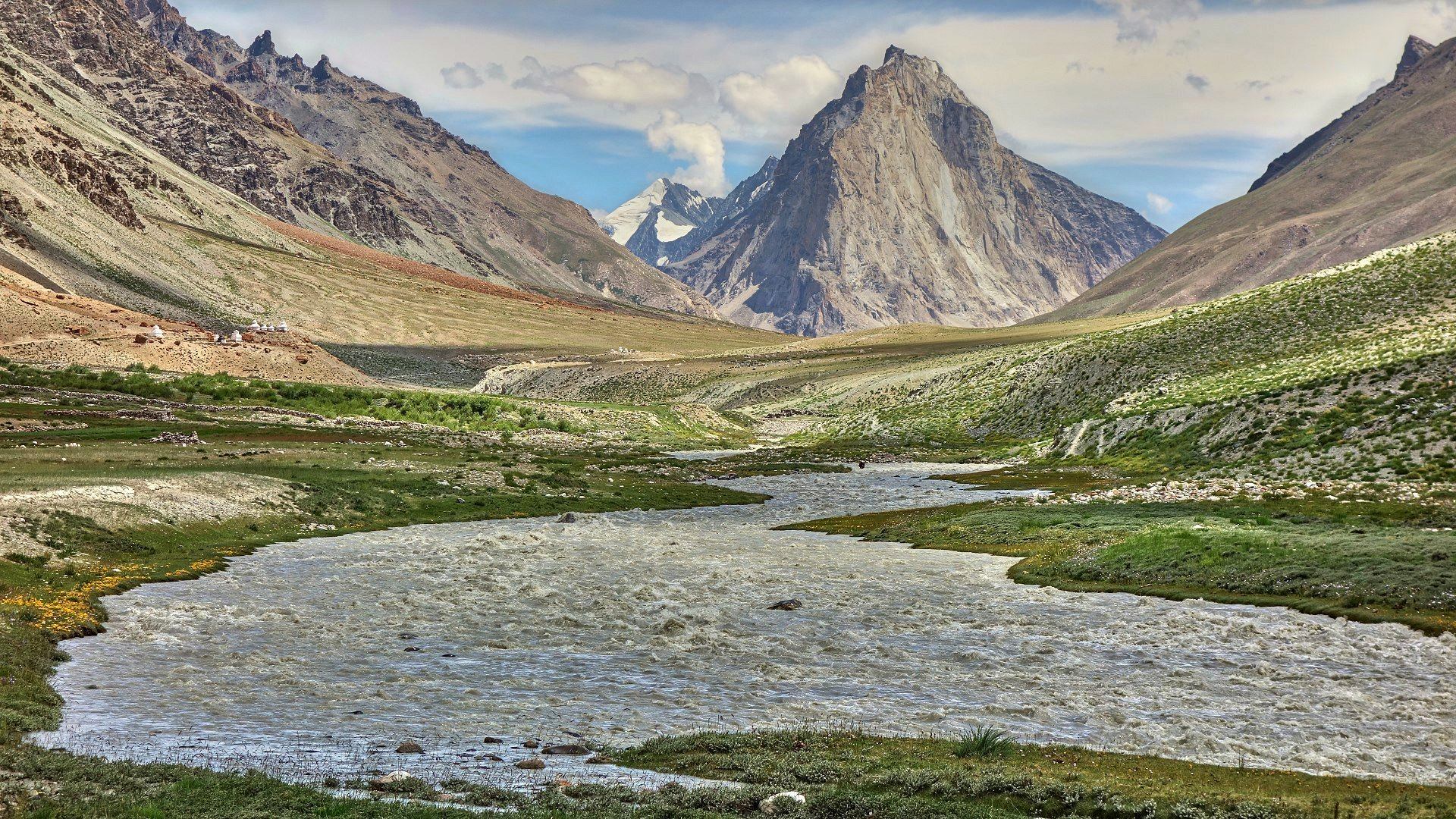
The track is still fairly large here, but for the next three days we split up from the horses in order to follow a narrow mountainside path, impassable for horses.
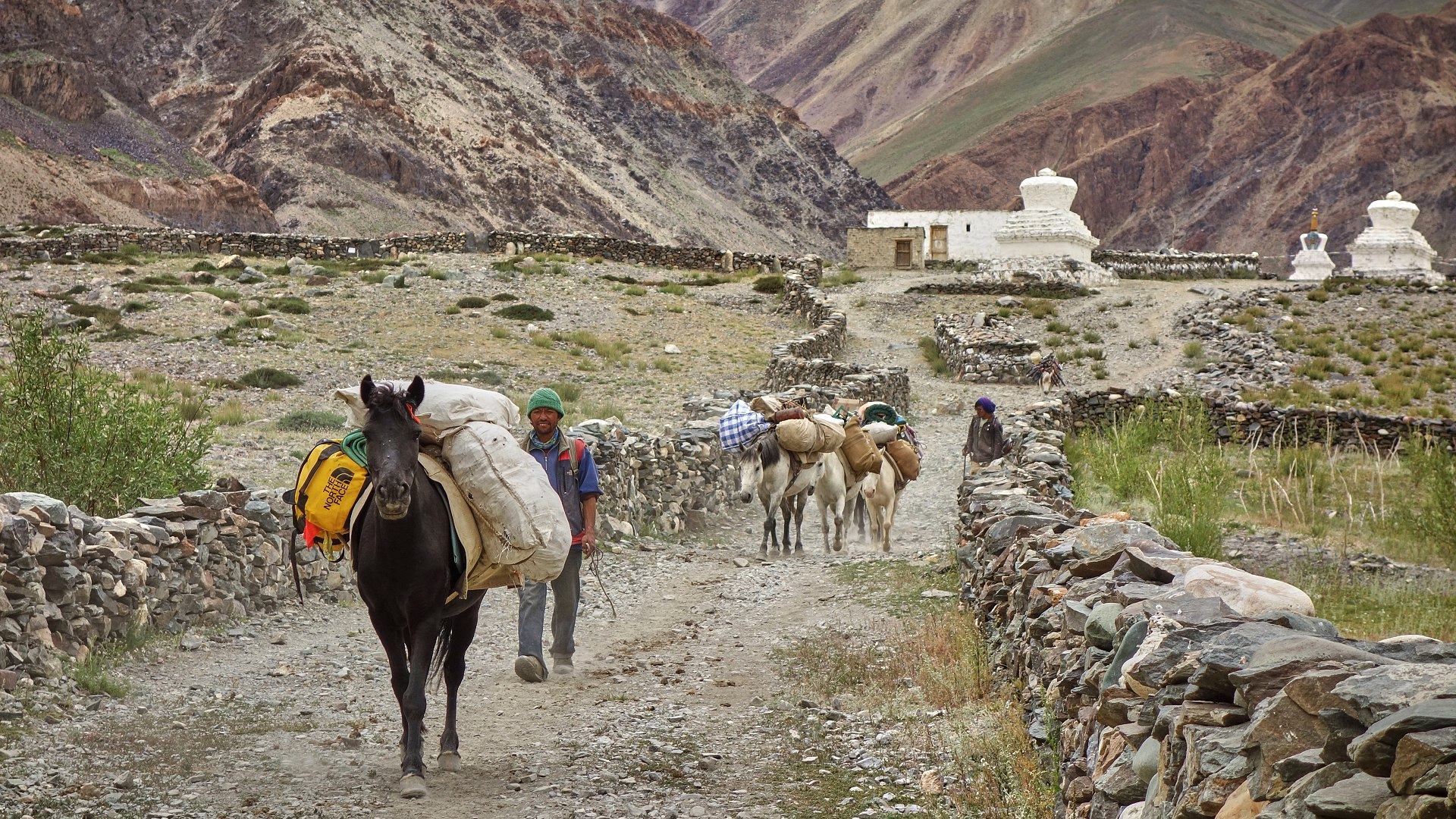
The presence of the mule drivers and cook during the eight day hike gives the parents a welcome break from some of the daily chores, as well as giving the children some new friends to play with!
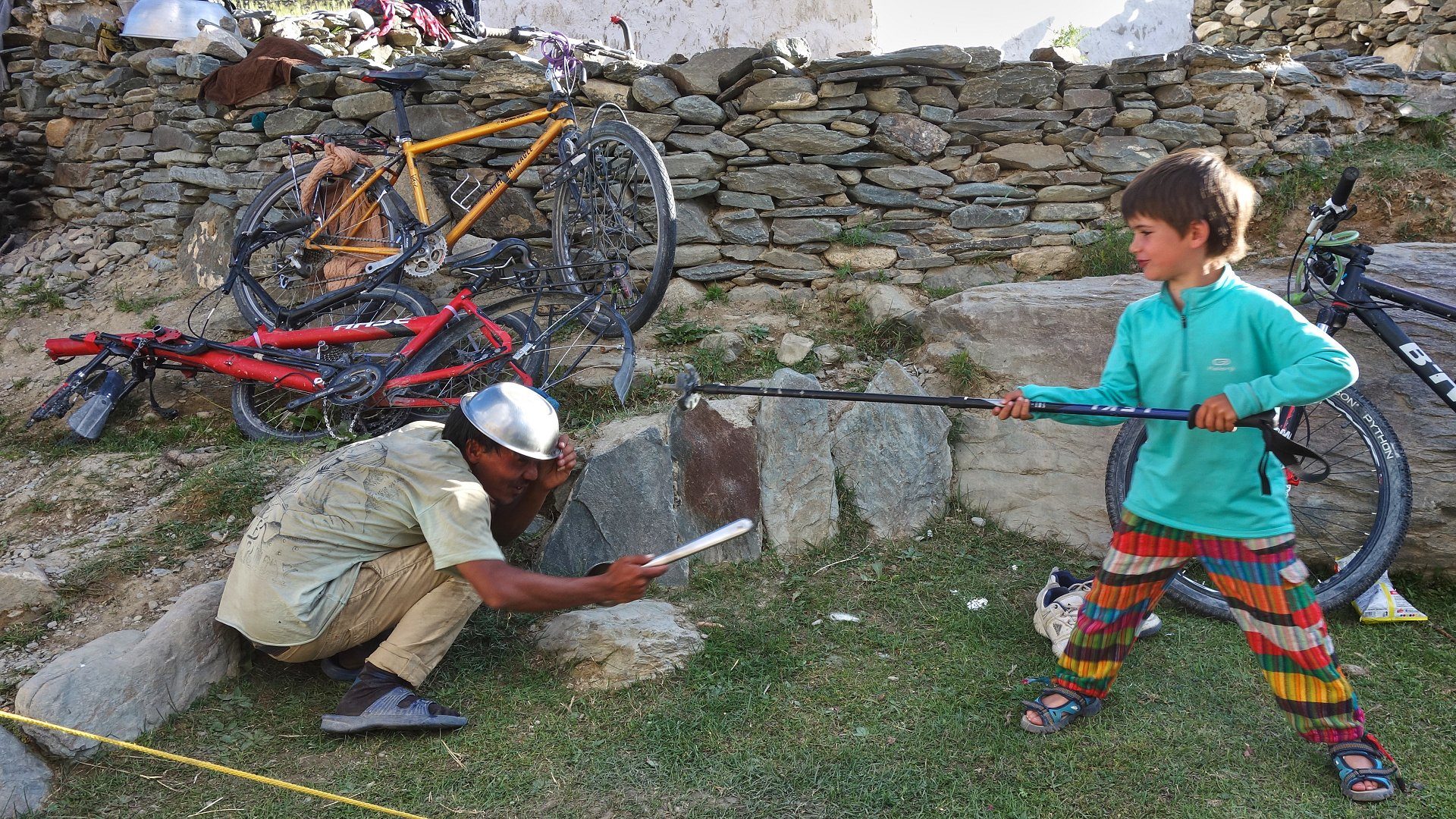
En route to the Phuktal monastery, perched alongside a turquoise river.
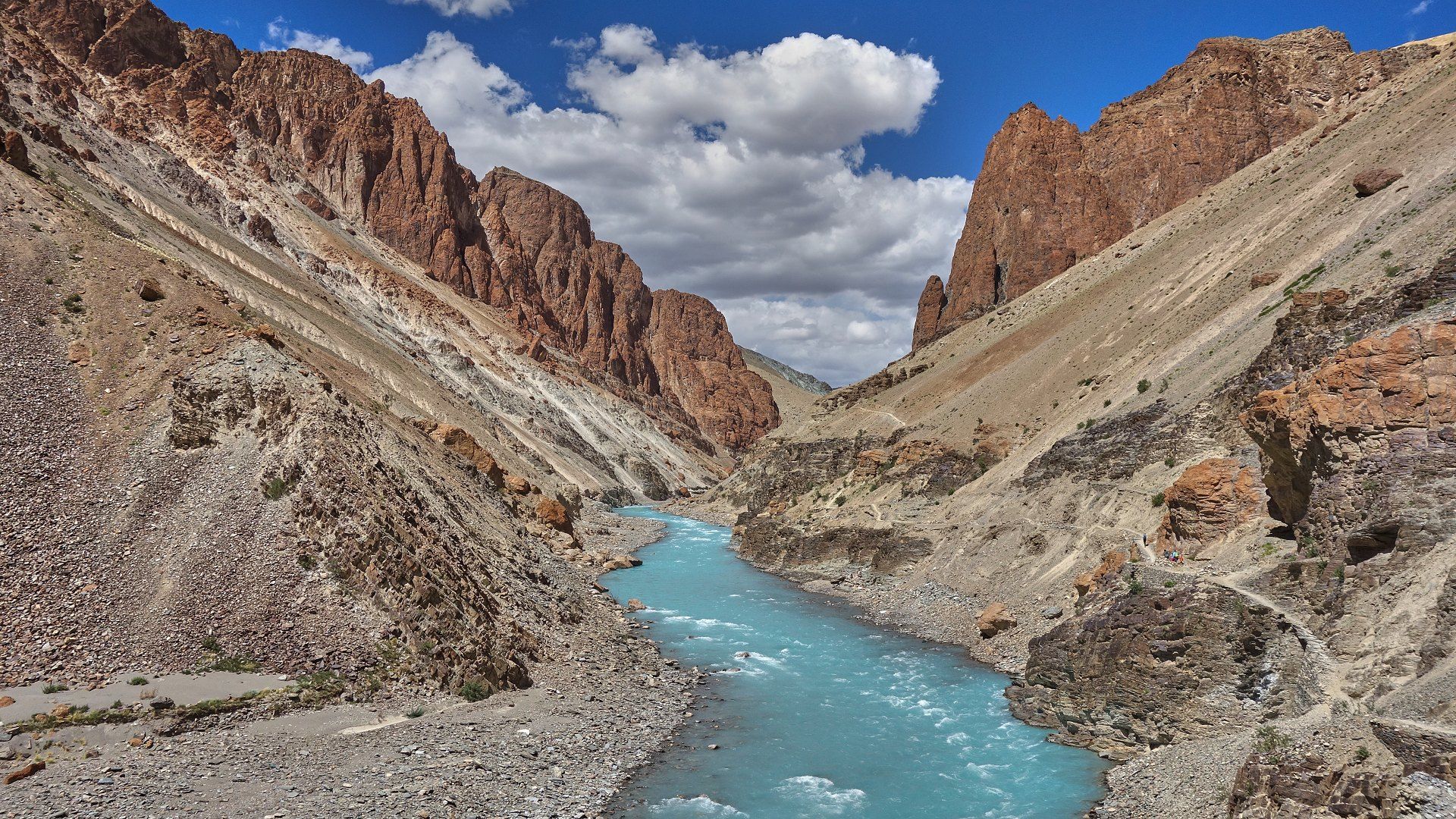
One last impressive footbridge before reaching the monastery.
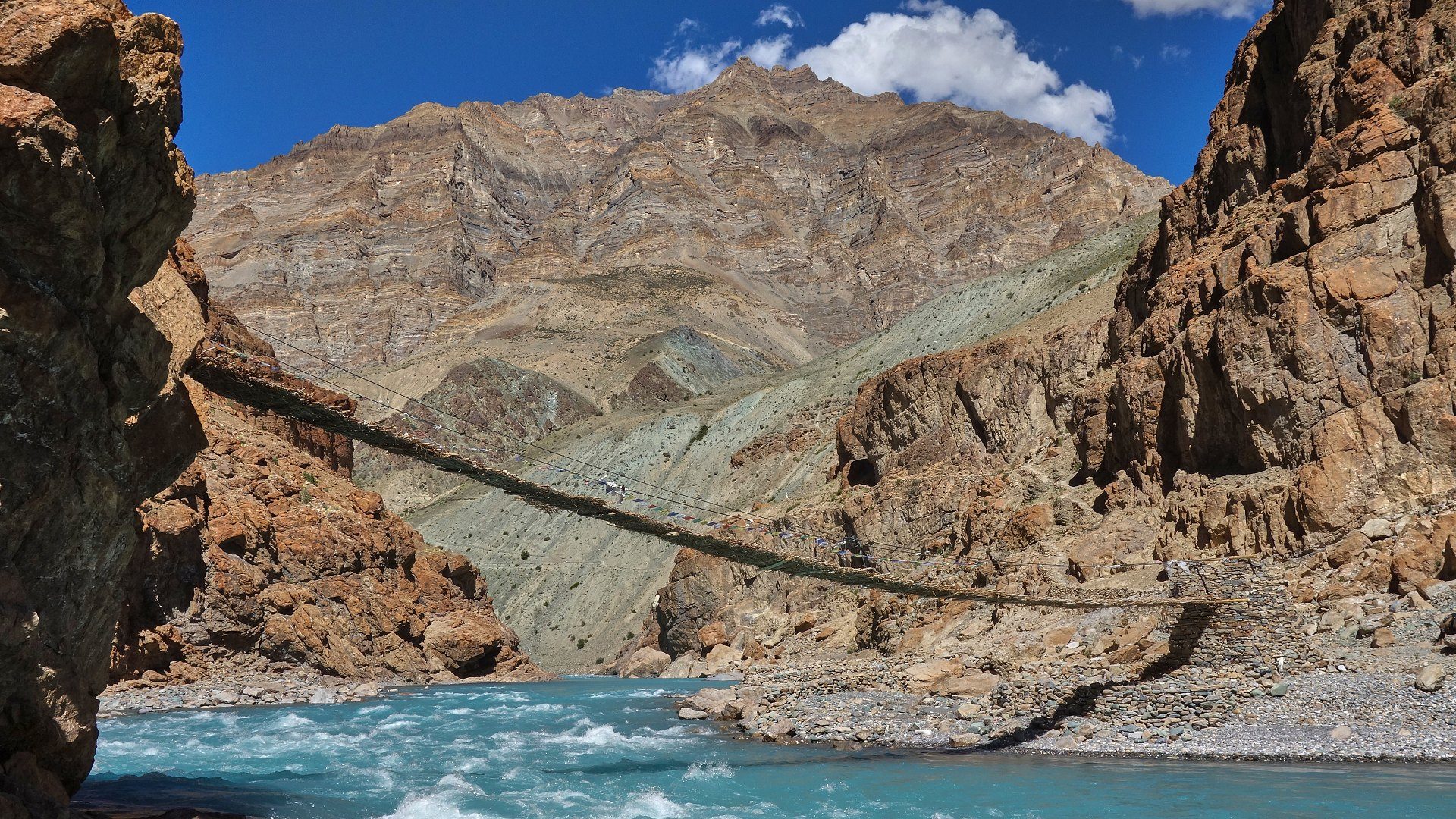
The remarkable Phuktal monastery.
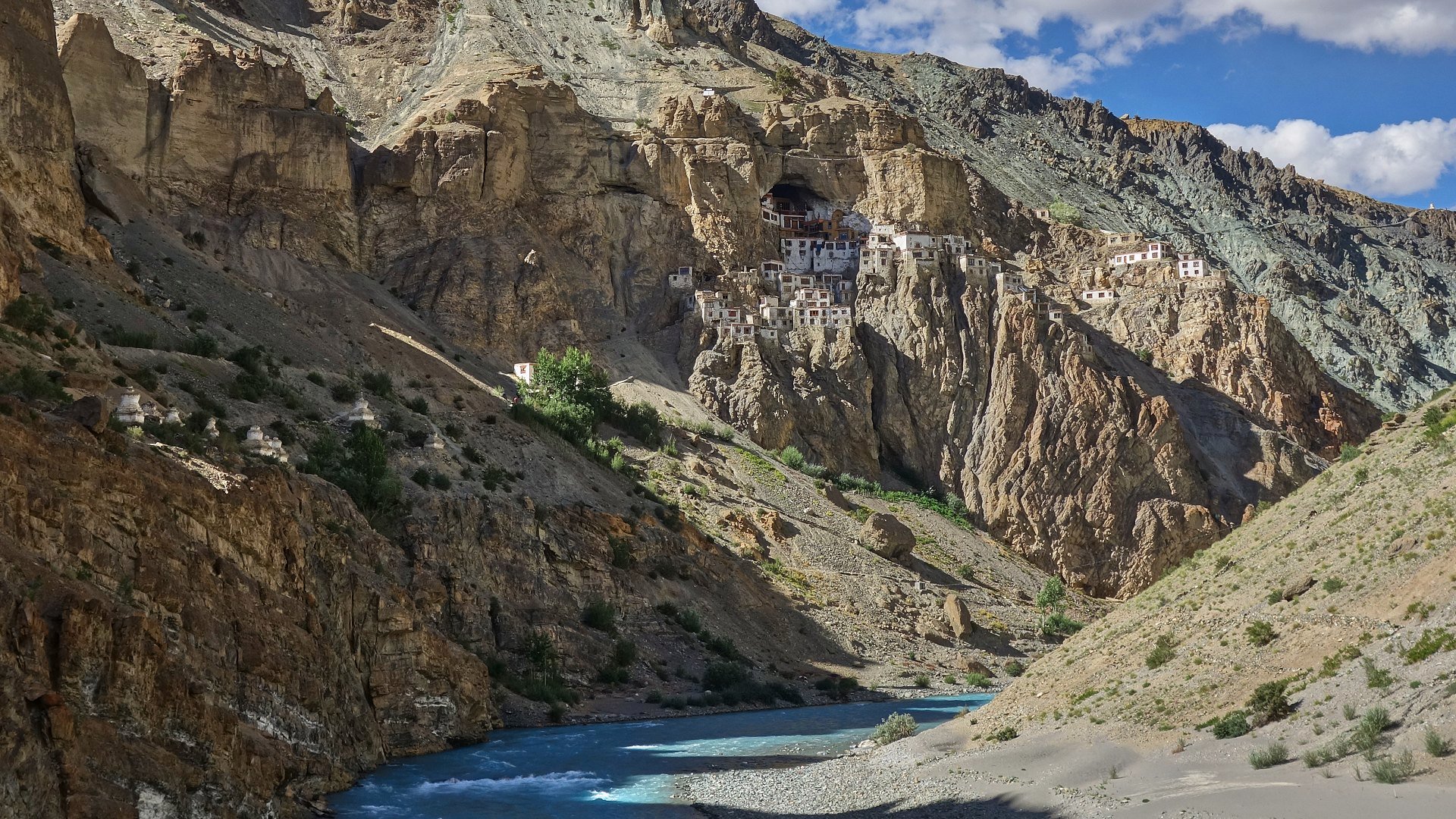
Tonight, we'll sleep next to the troglodyte monastery. The monks invite us to prepare and share dinner with them!
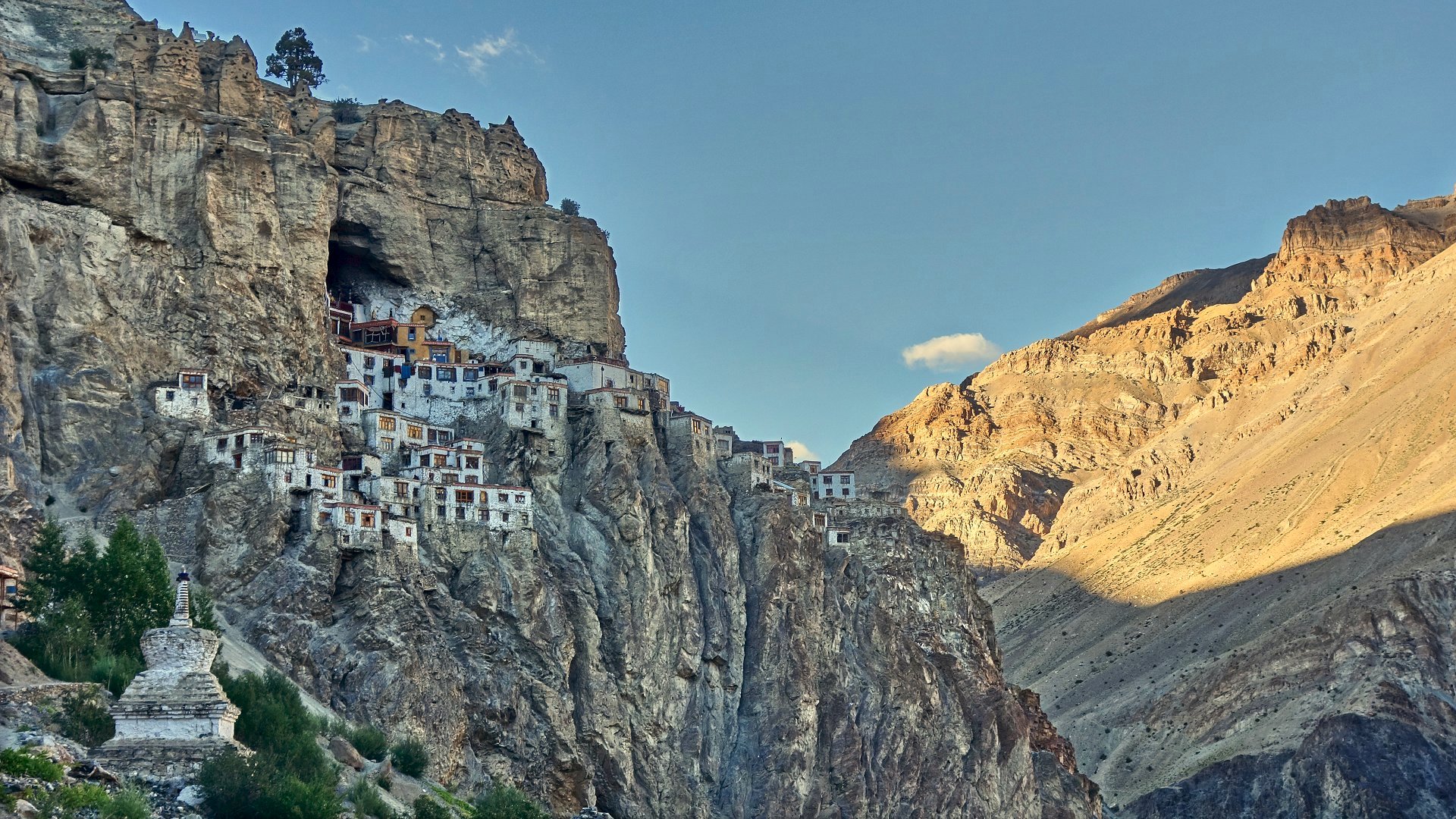
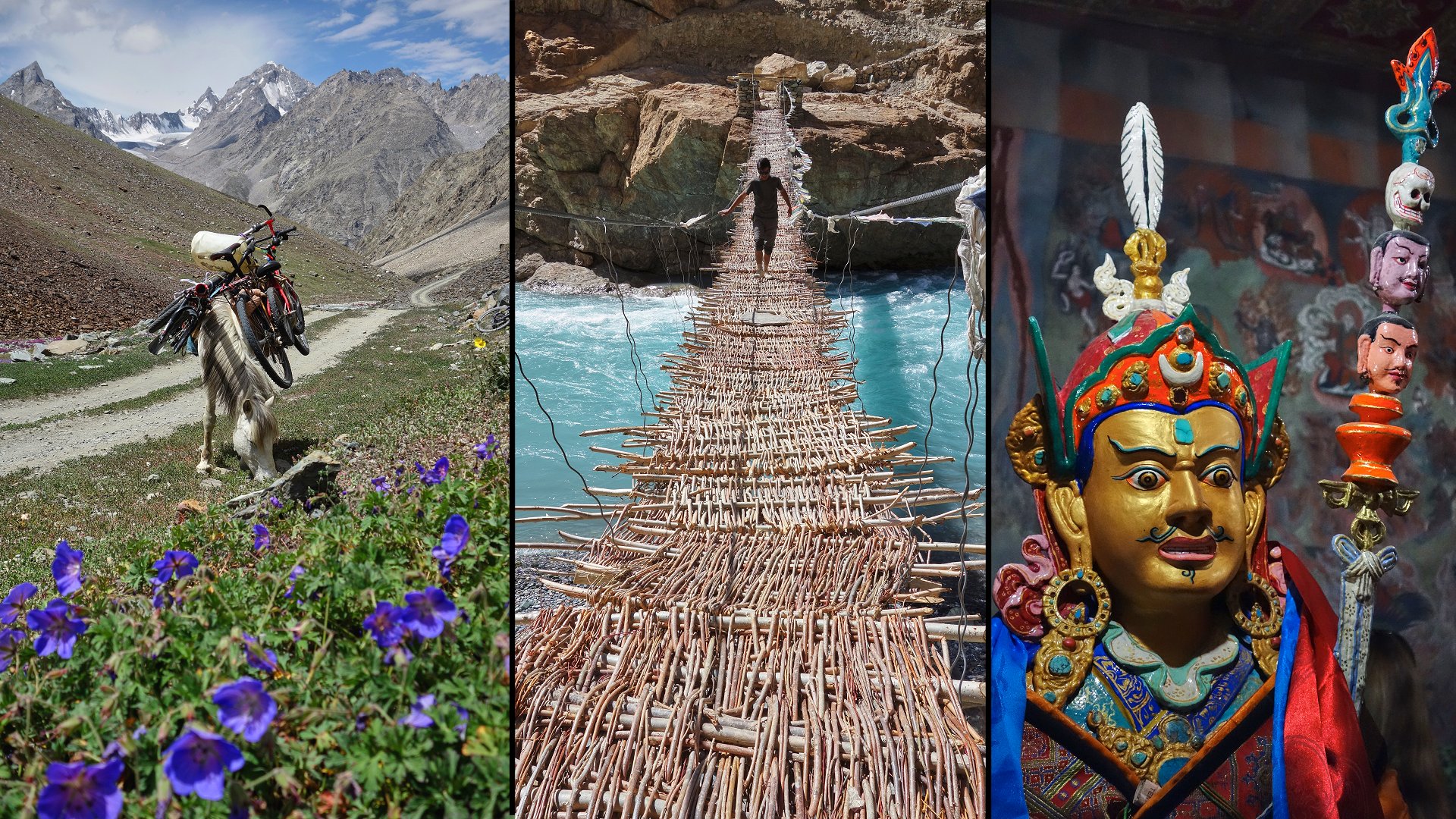
We collect our bikes before being invited to eat at the Muné monastery. In exchange, we offer the monks a ride on our bikes.
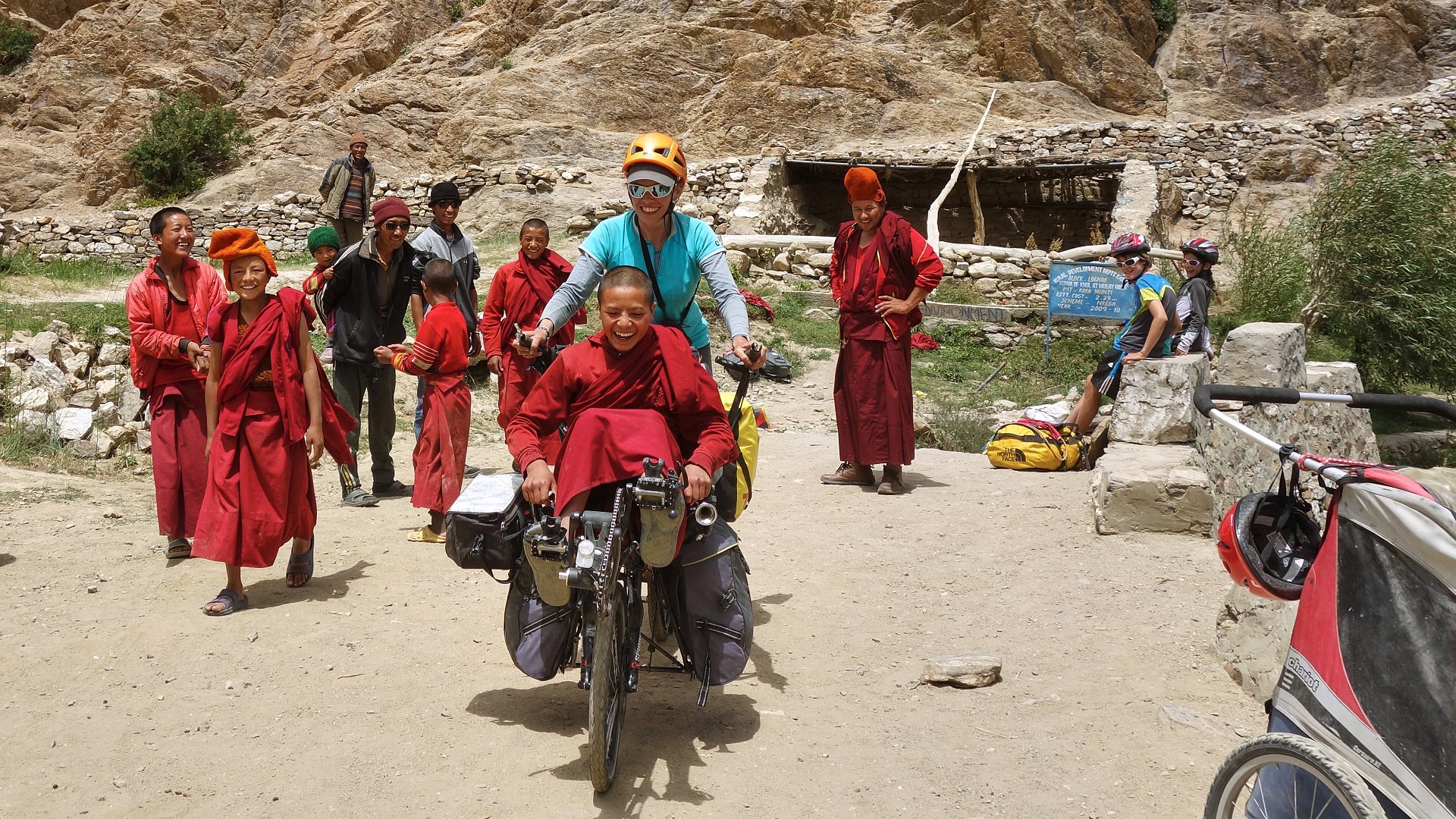
The Bardan monastery, shortly before arriving at Padum, in the heart of the Zanskar.
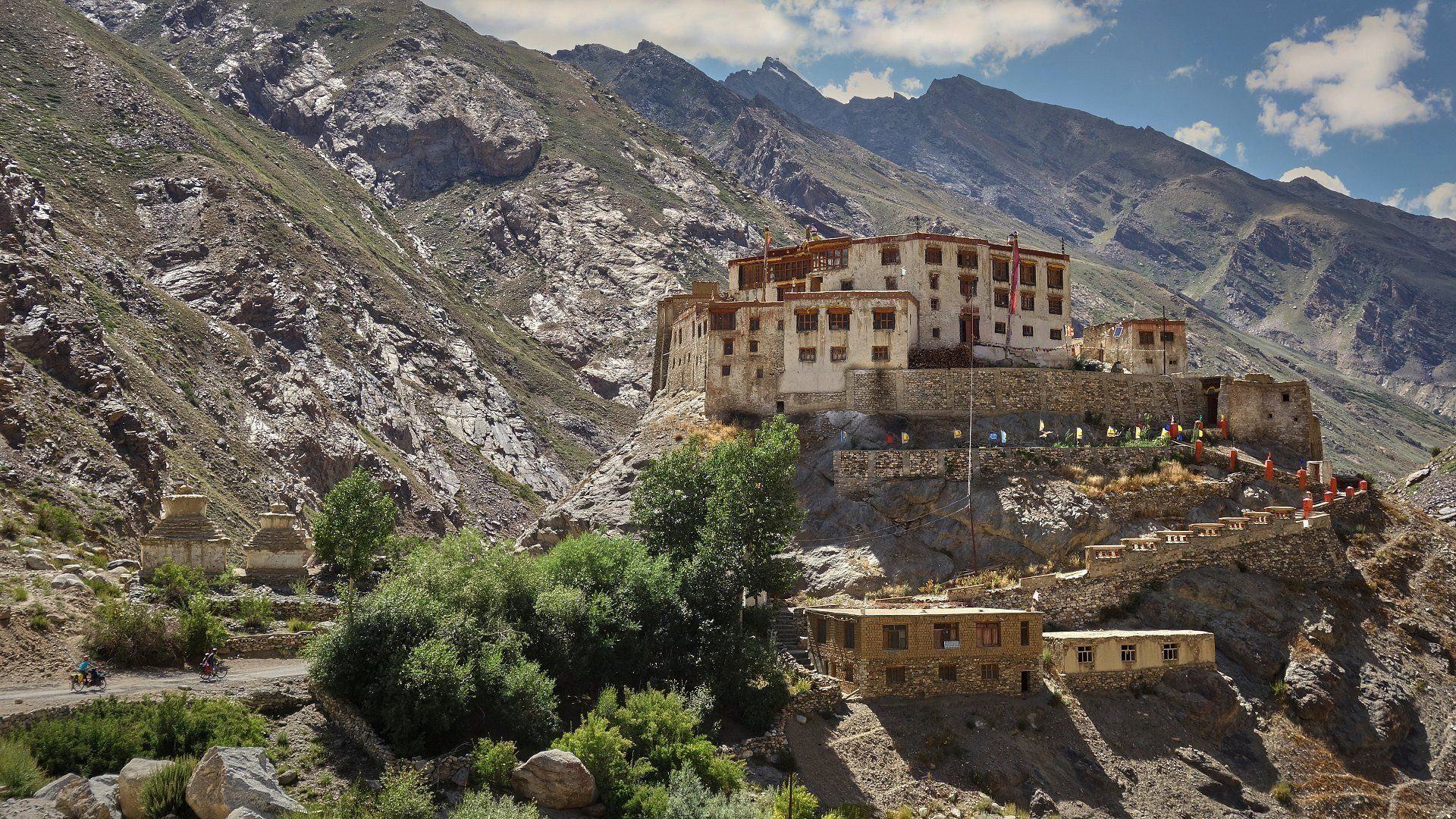
Restoration of the Karcha monastery frescos.
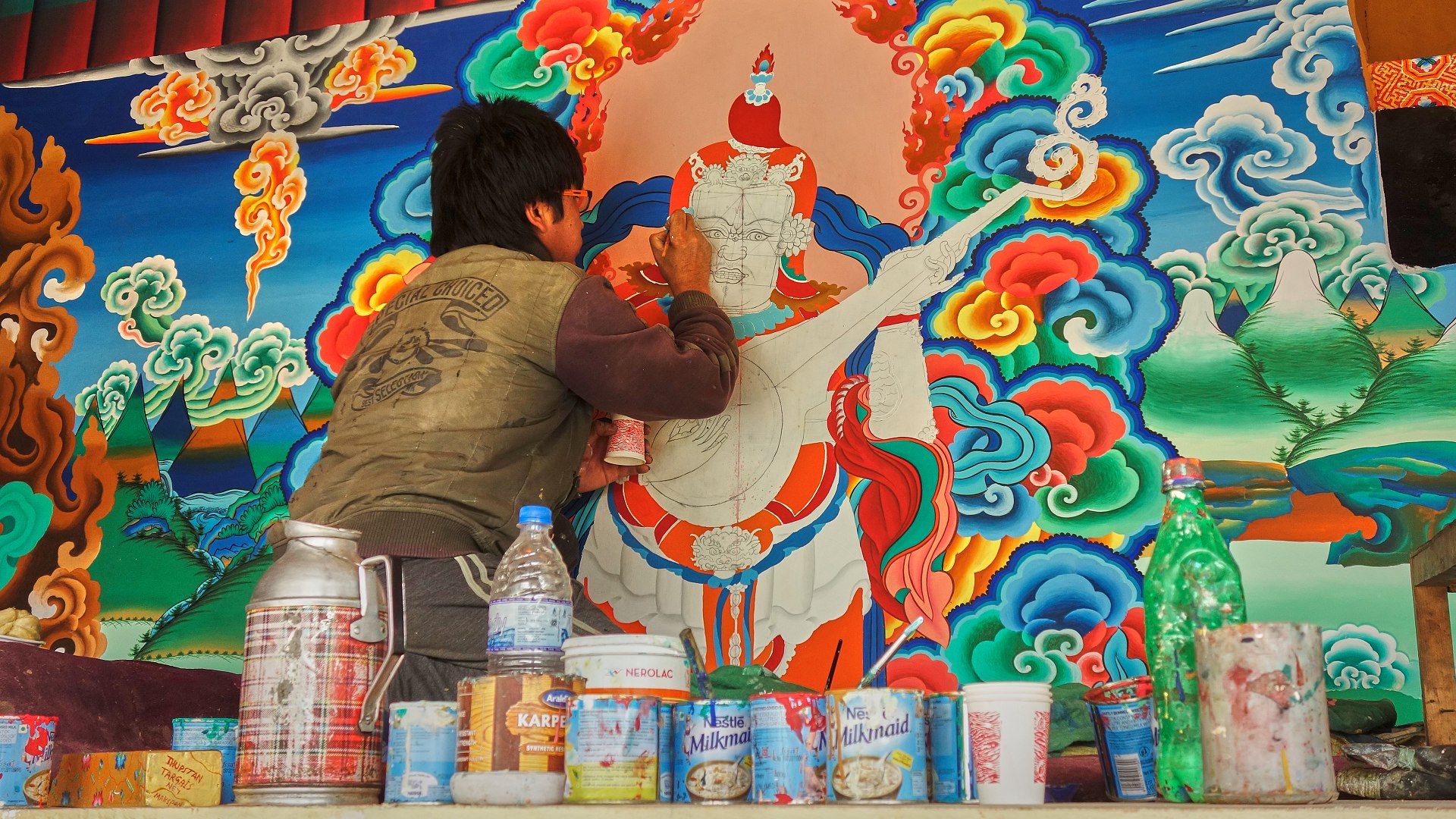
En route to the Pensi La (4400m).
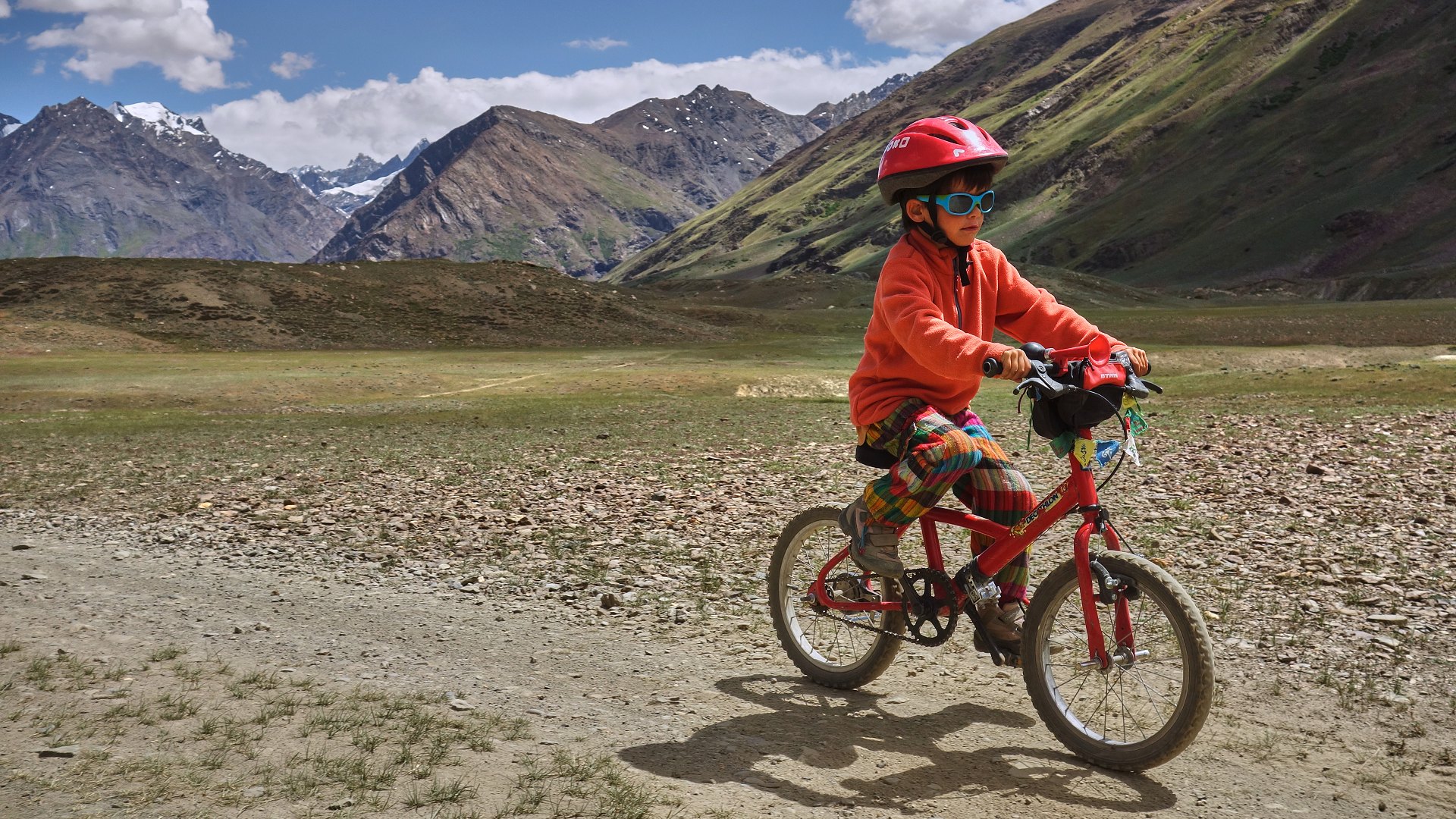
The Darang Durung glacier, just before arriving at the Pensi La pass (4400m).
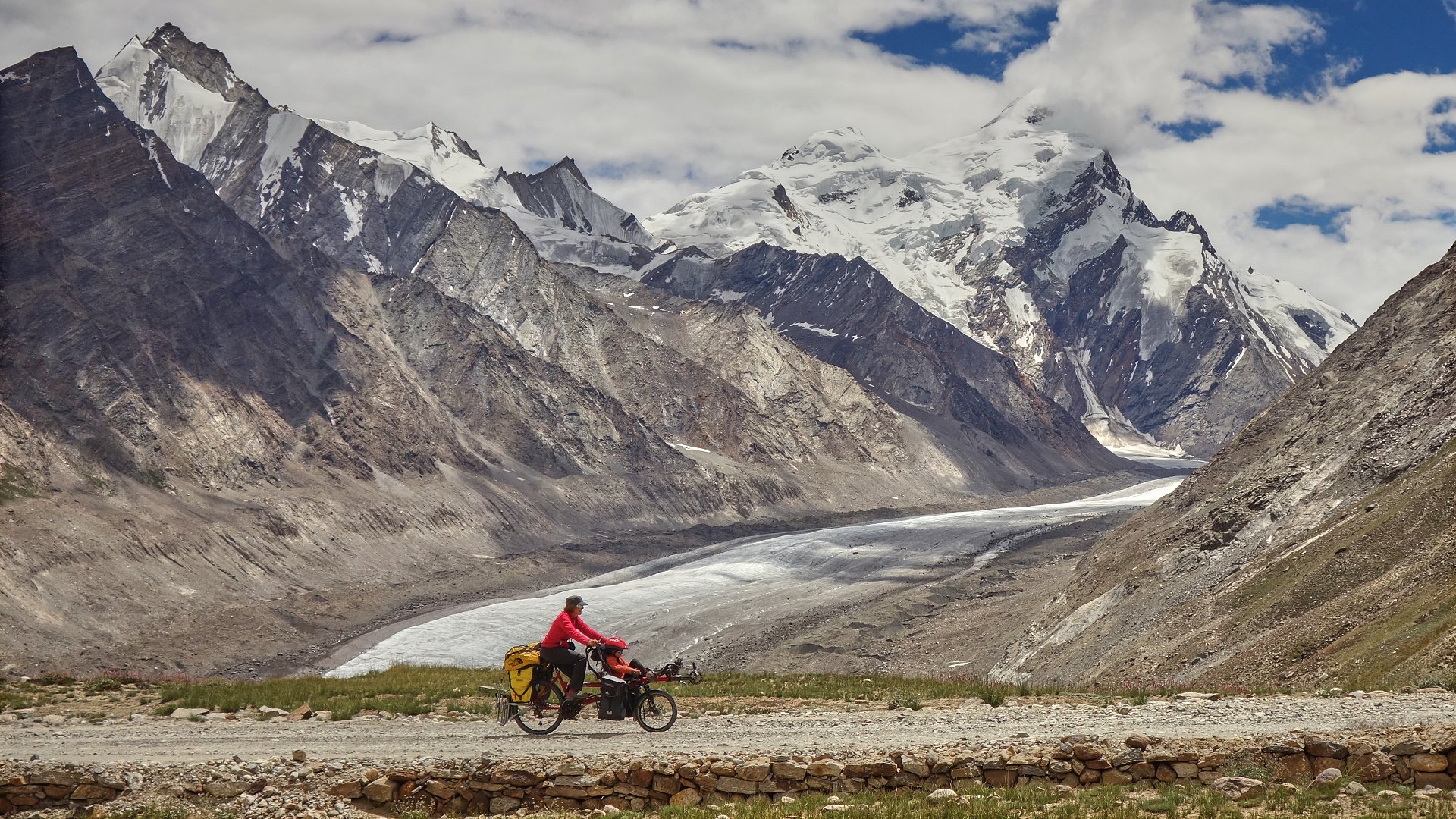
Ariane and Titouan arrive at the Pensi La pass, surrounded by marmots.
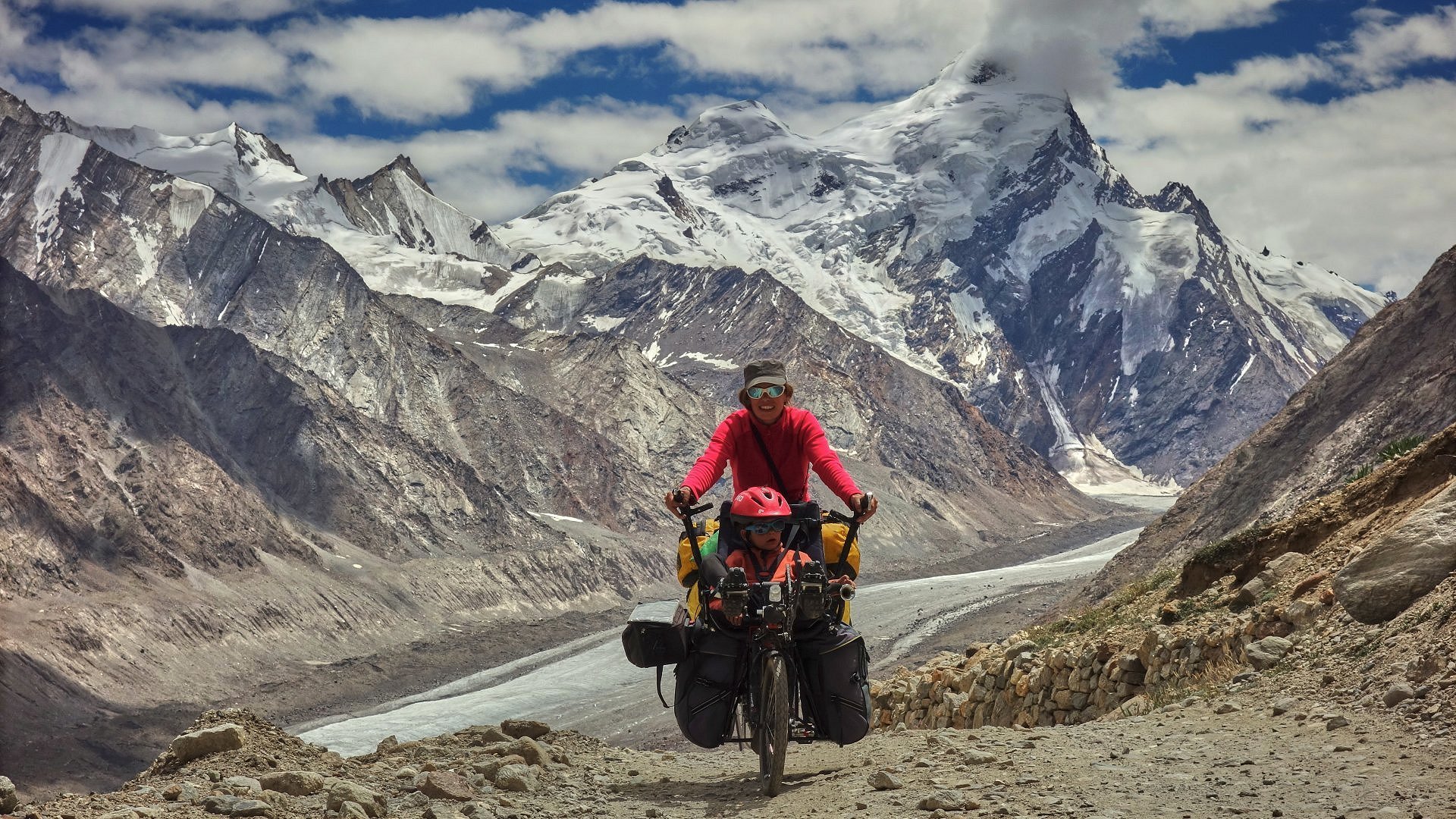
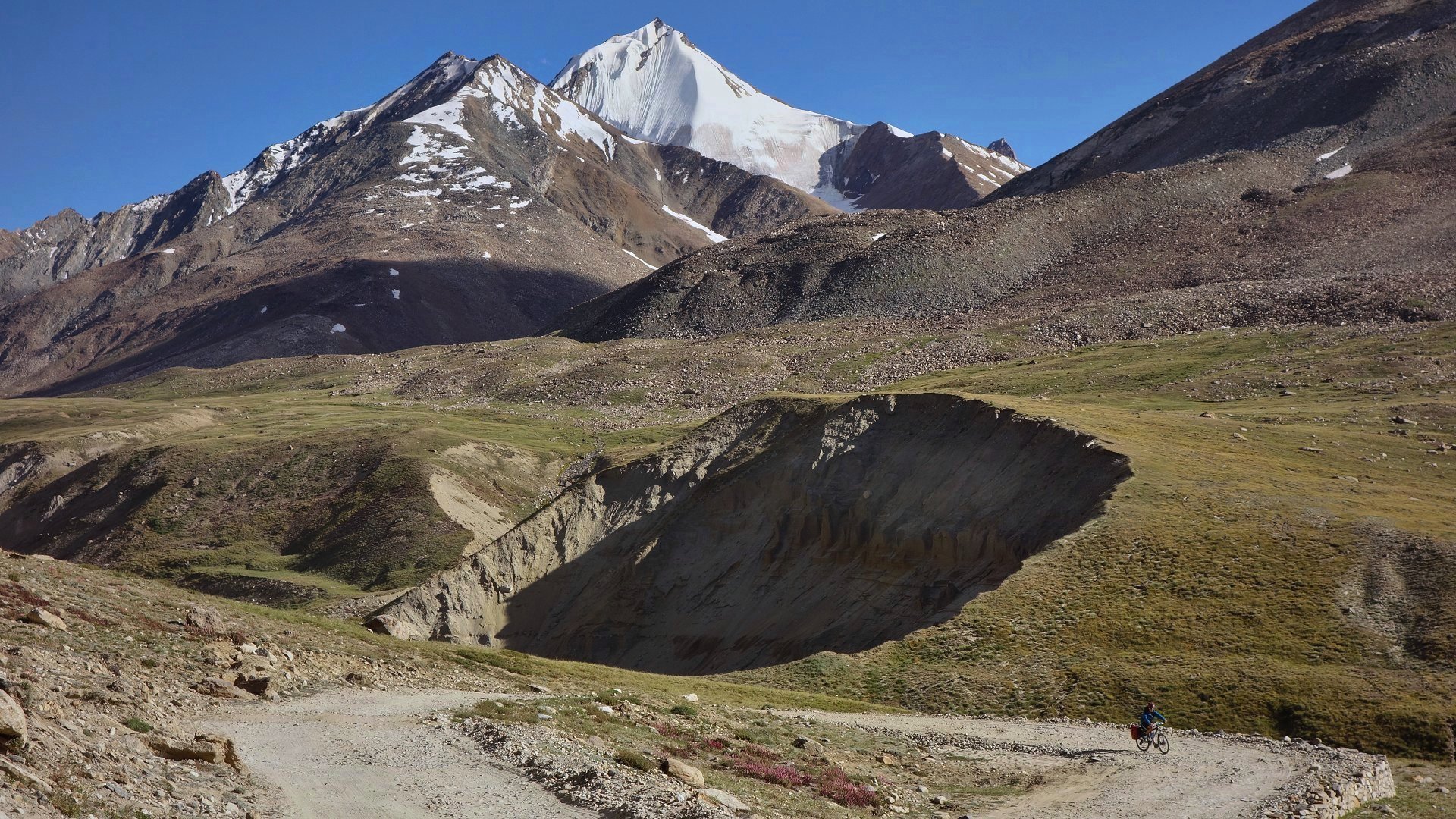
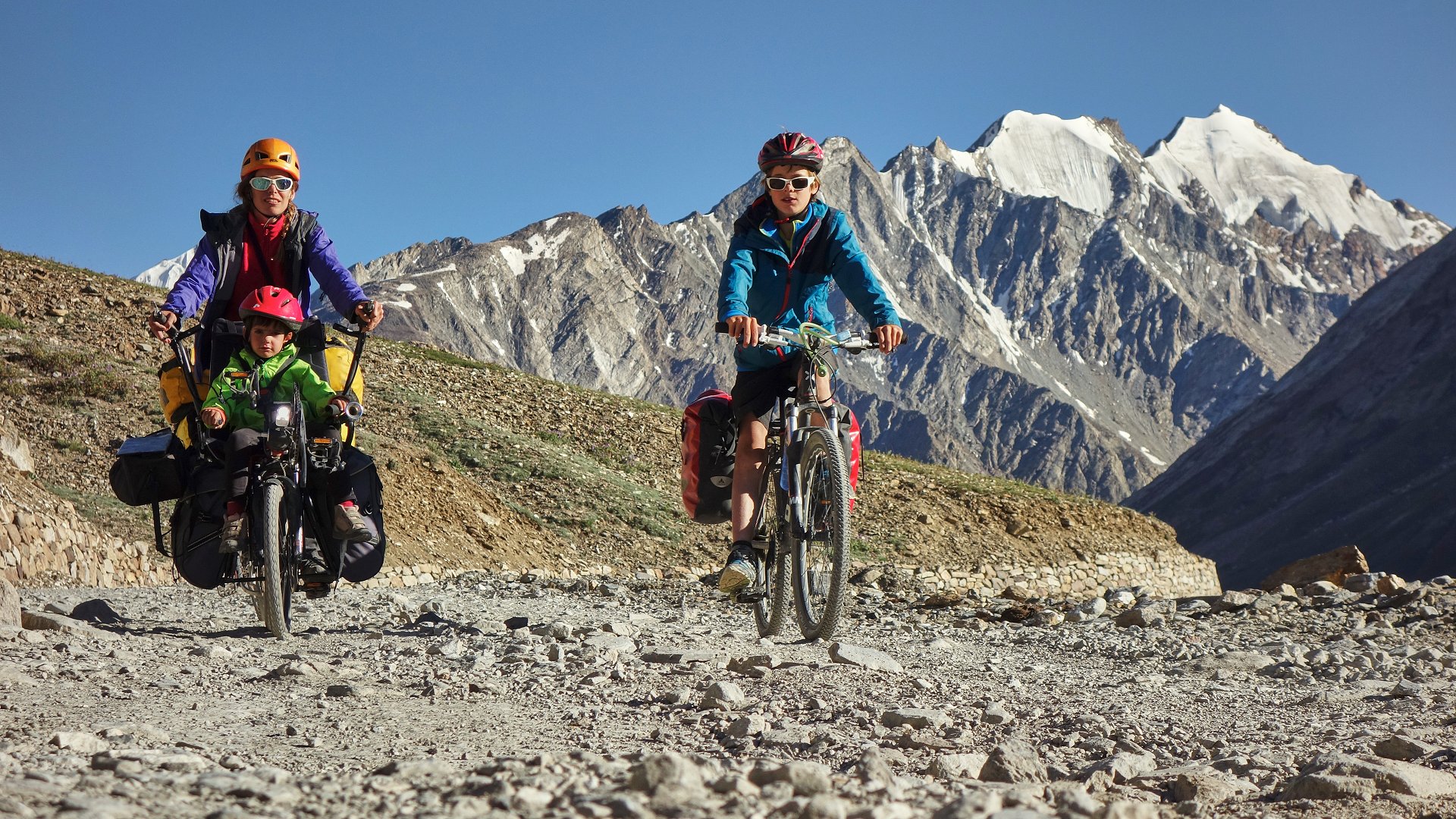
Superb grazing for horses and yaks, with a summit in the background that resembles the Dibona, in the French Alps.
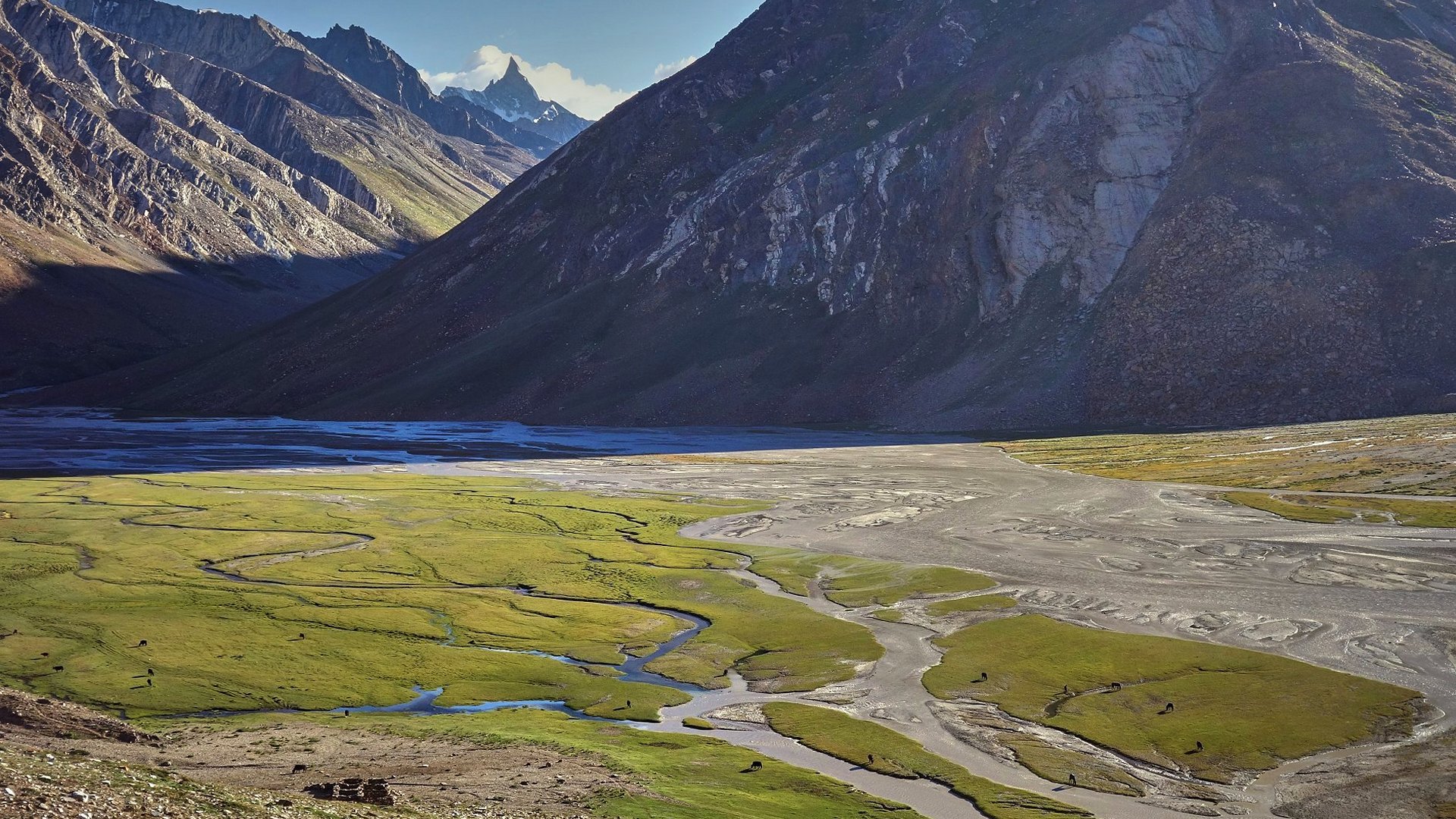
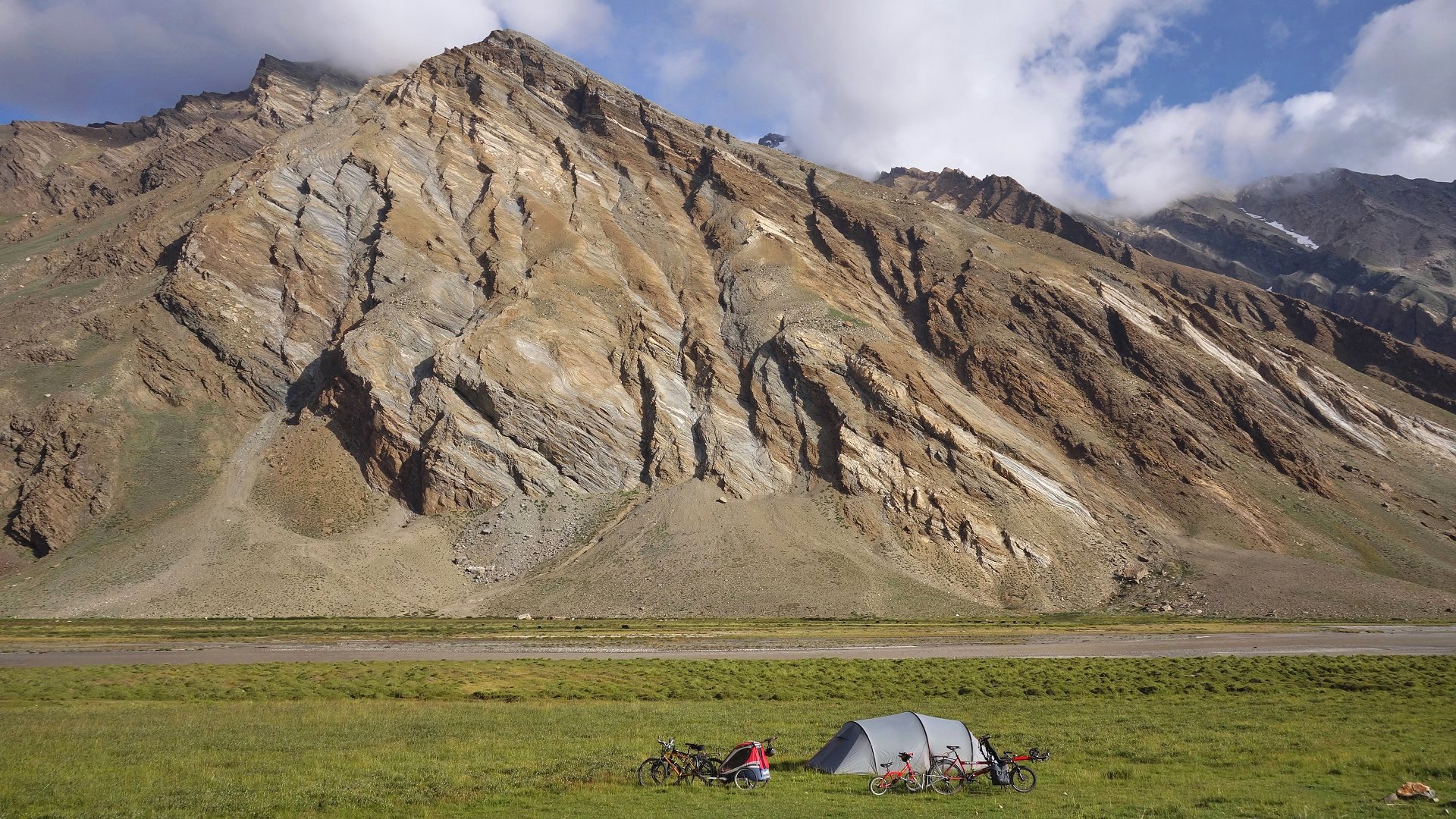
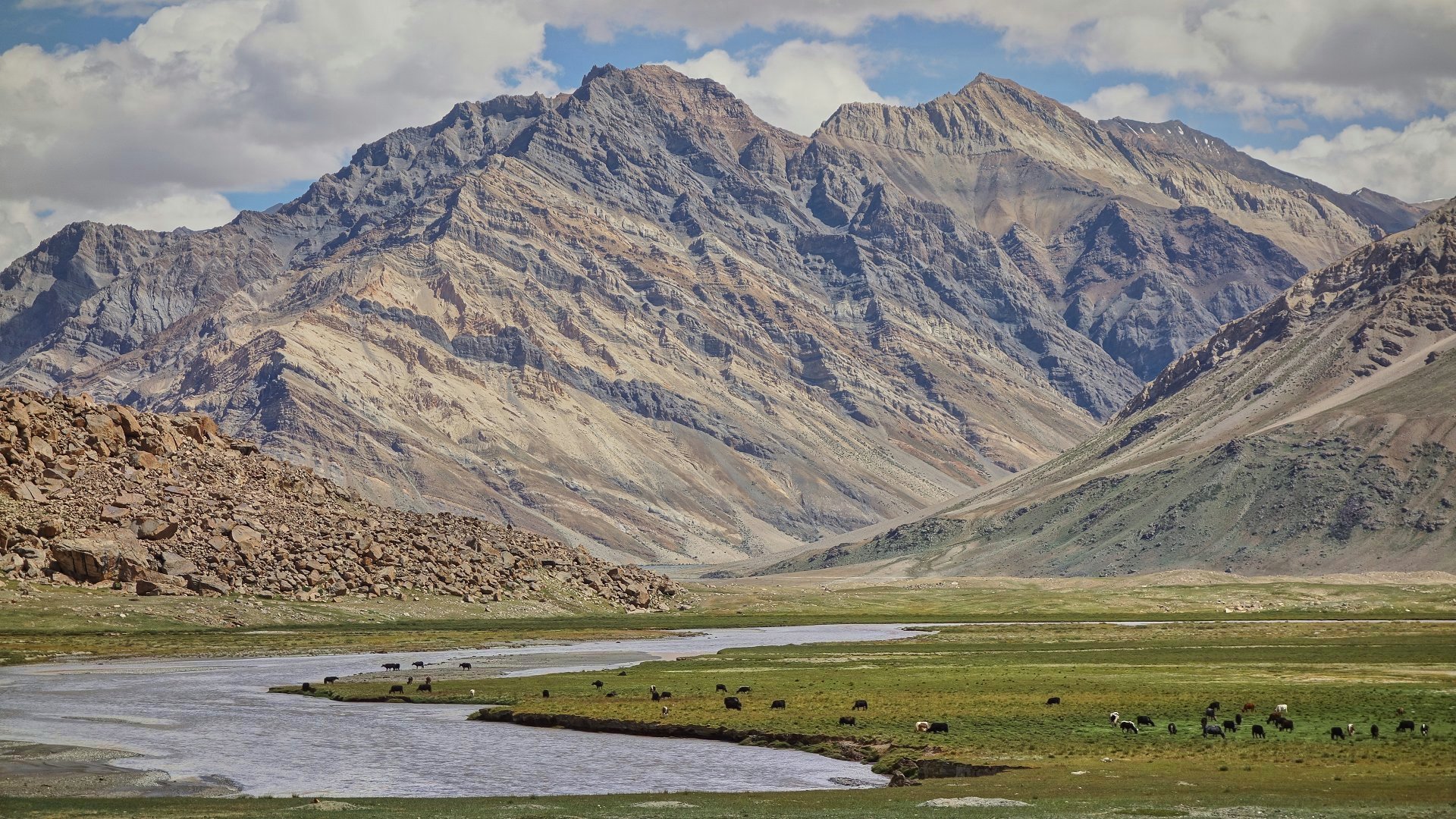
The Rangdum monastery.
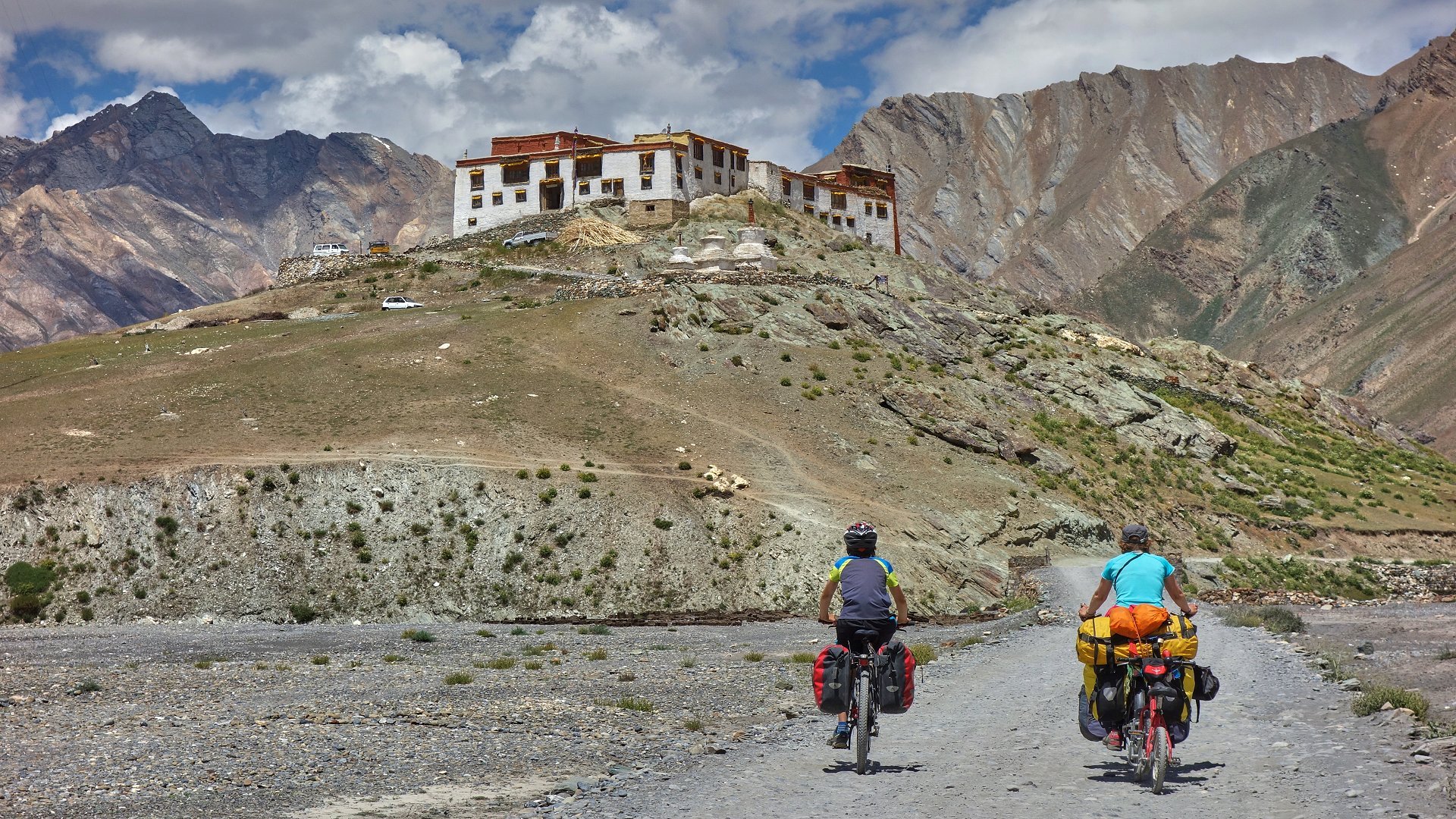
Close to Rangdum, these Buddhist monuments mark the frontier with the Muslim sector of Kashmir.
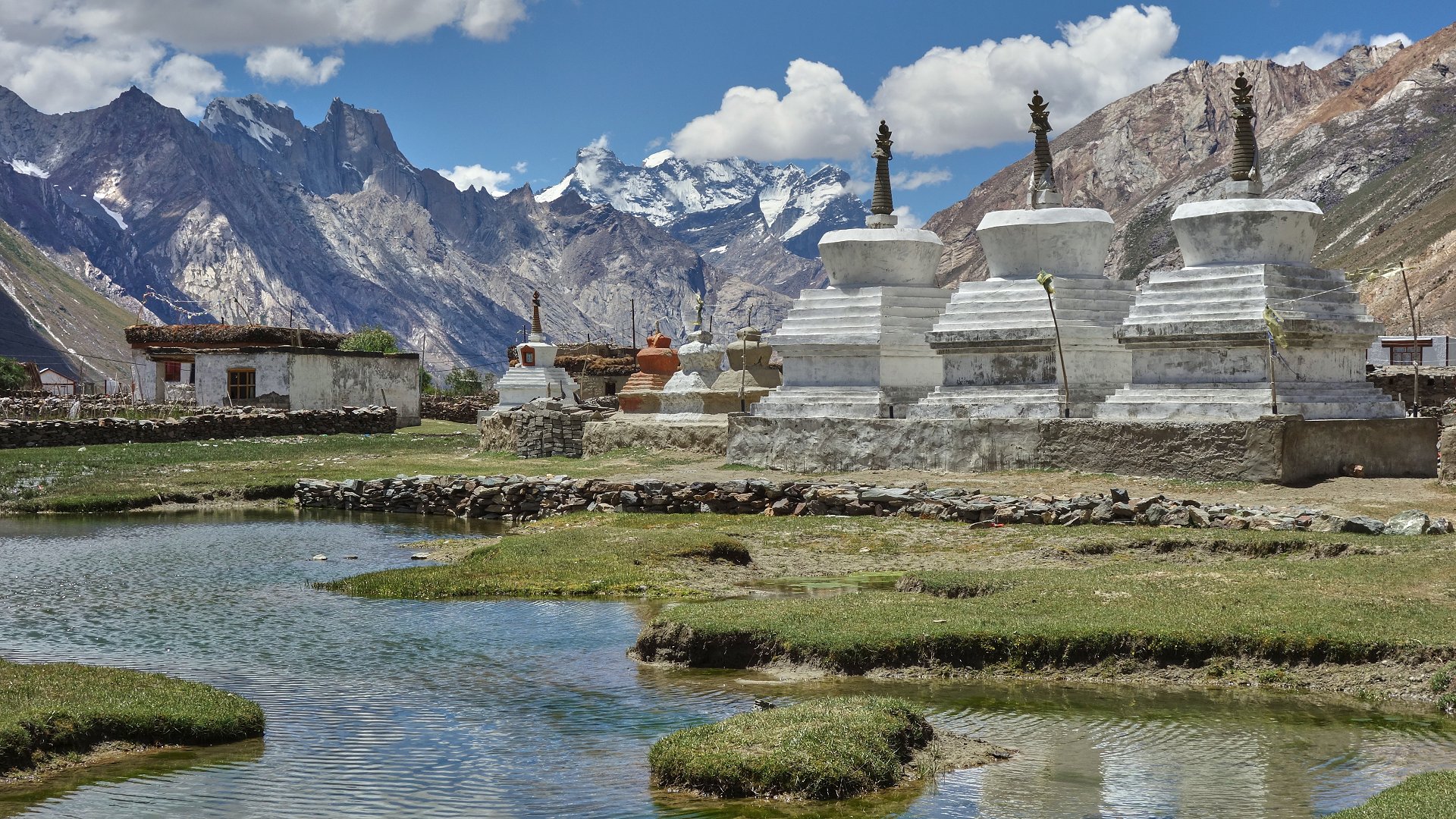
Last bivouac on an «island» at the foot of the big walls of the Nun-Kun range.
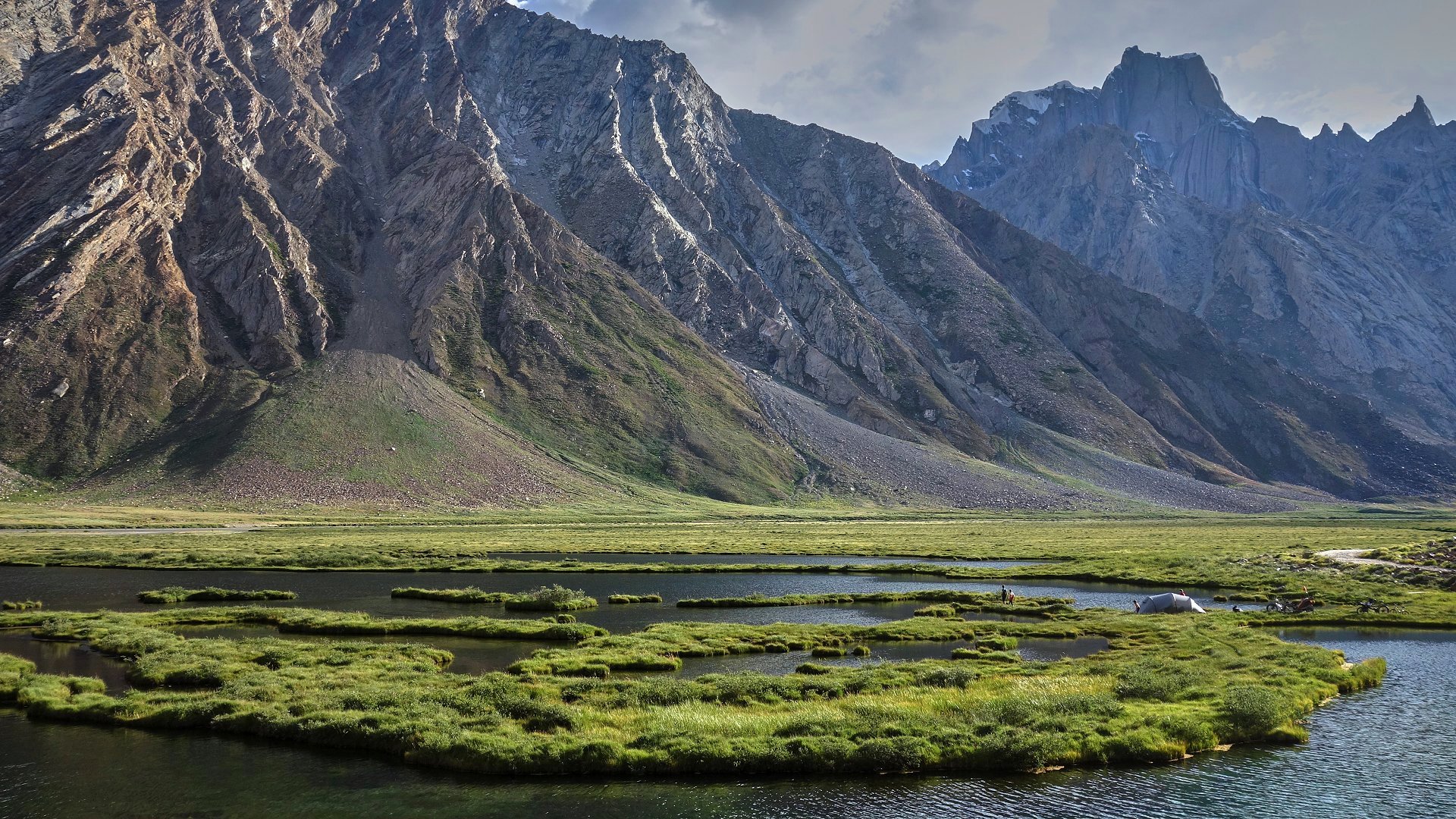
At the foot of the Nun-Kun, the 7000m twin peaks of Kashmir. After more than a month amongst a predominantly Hindu and Buddhist population, tomorrow we'll be in Kargil, on the border with Pakistan, where the Shiite Muslims proudly display their portraits of the ayatollahs Khomeini and Khamenei…
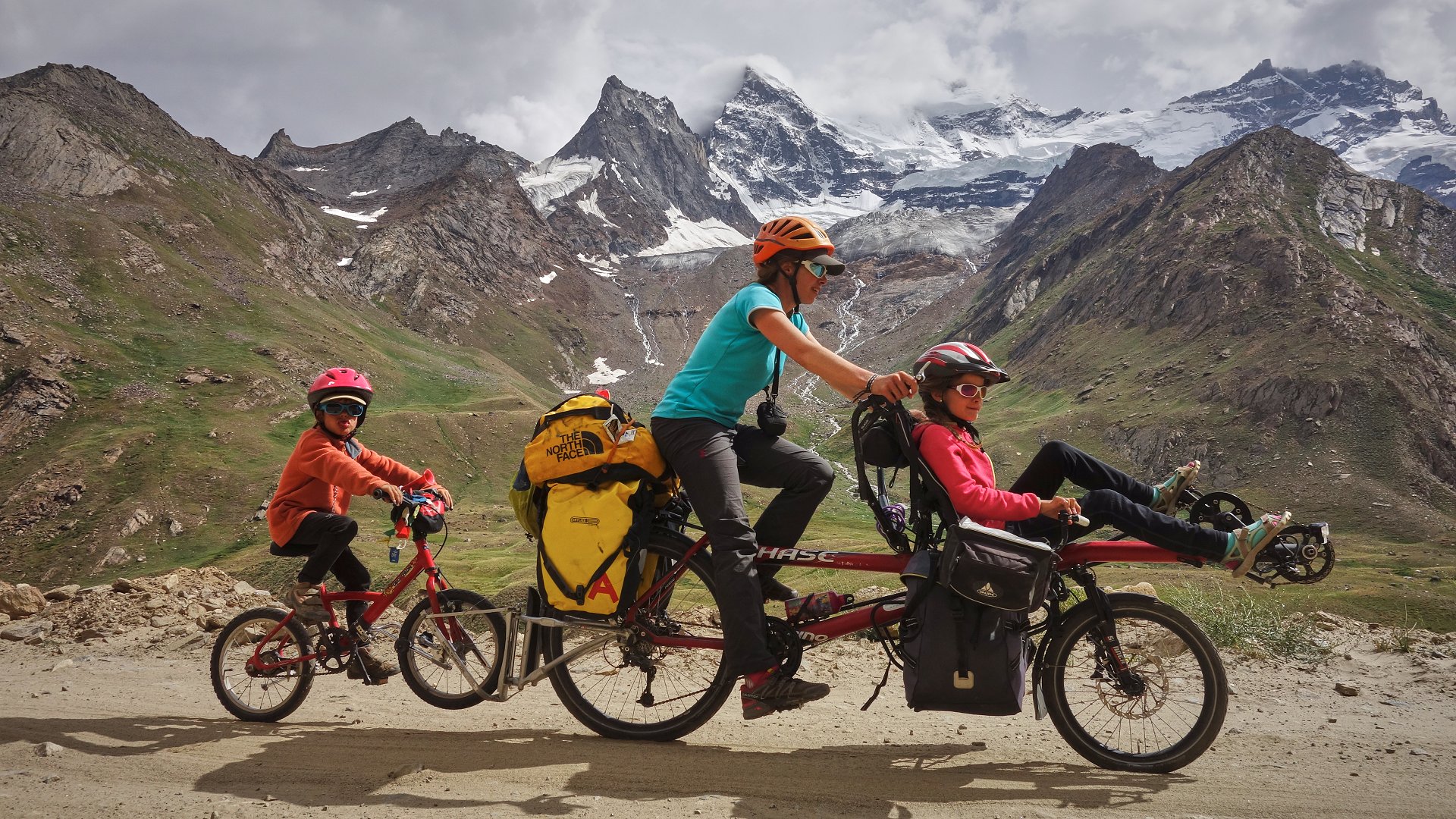
/

